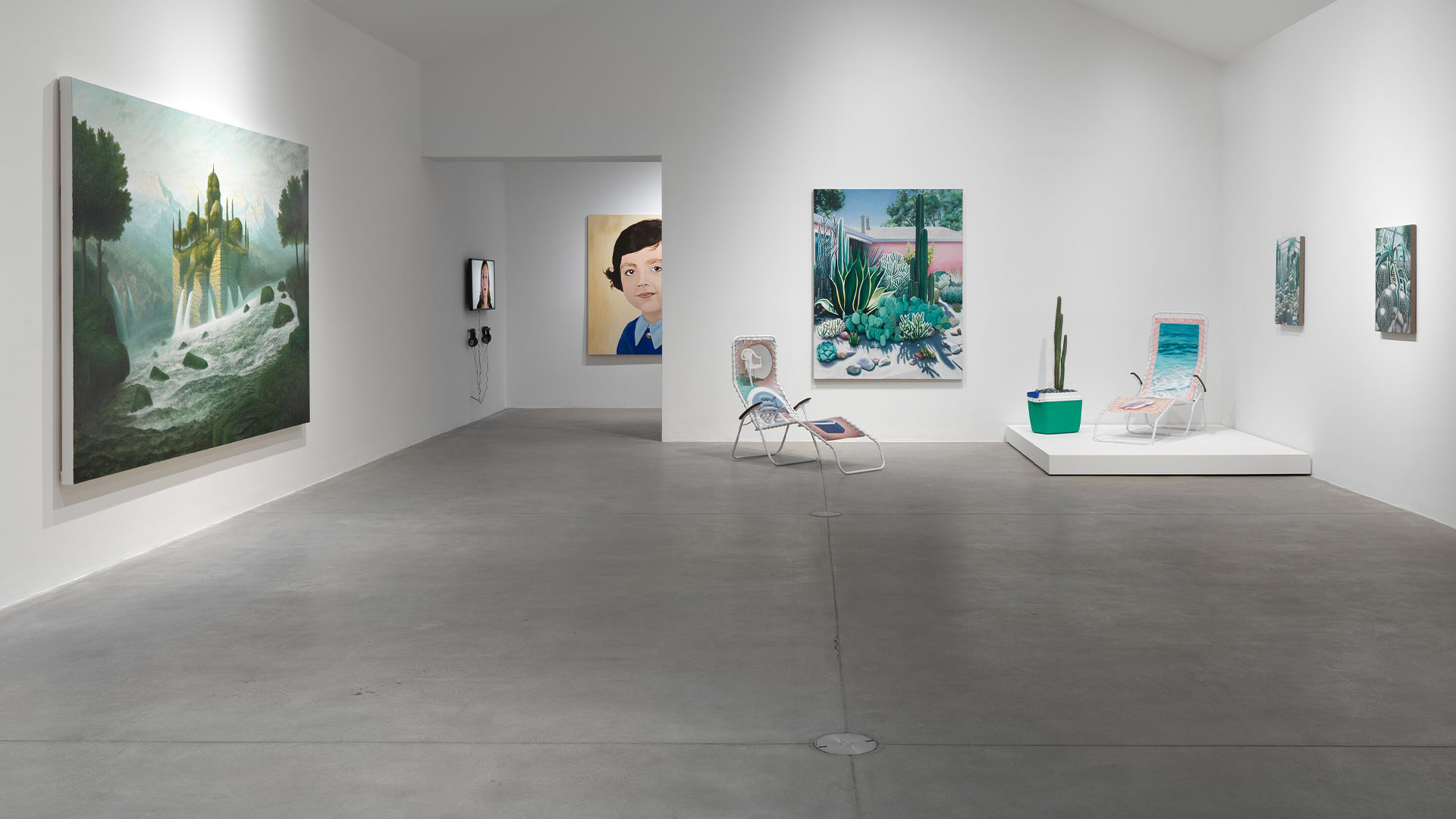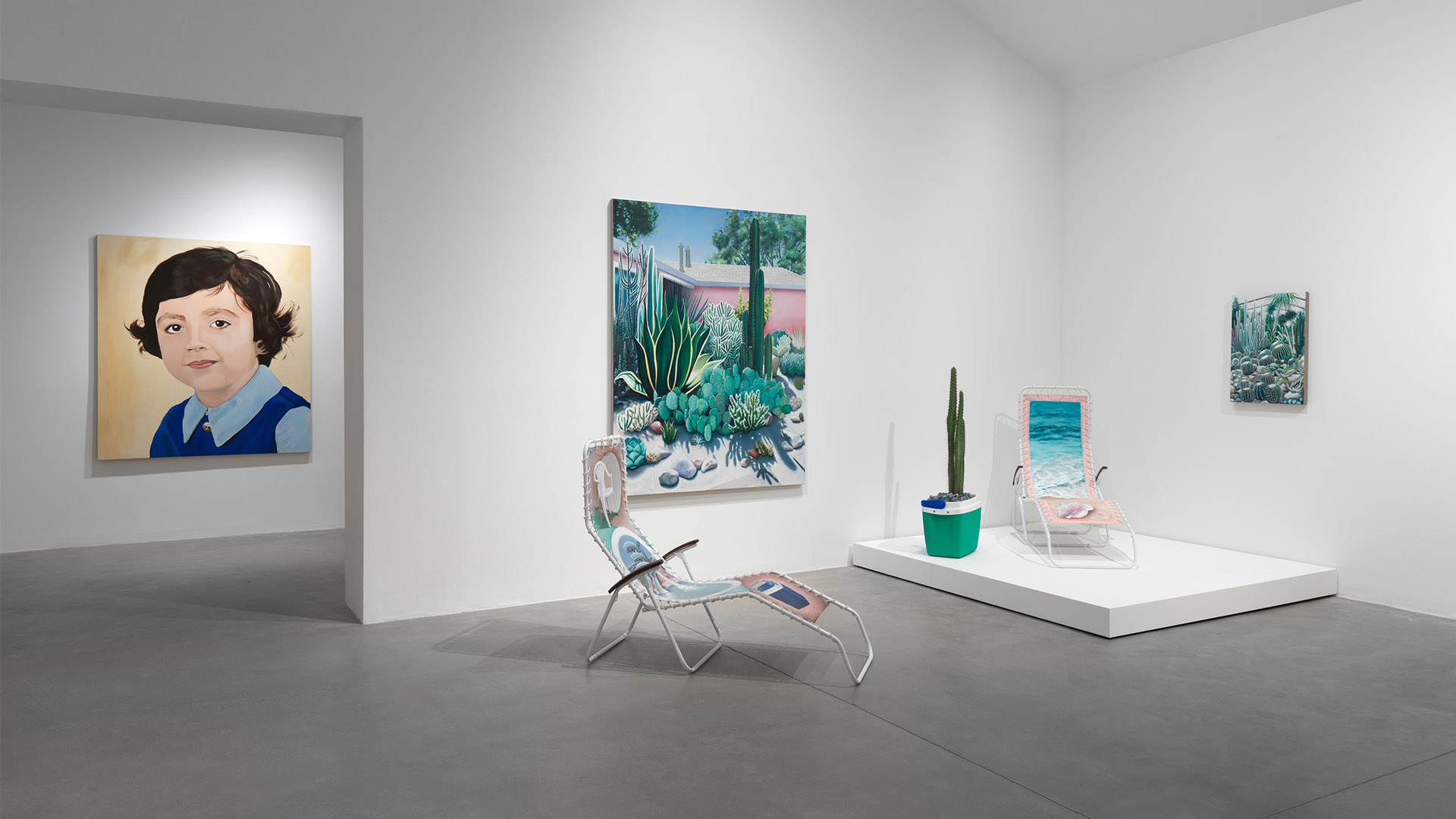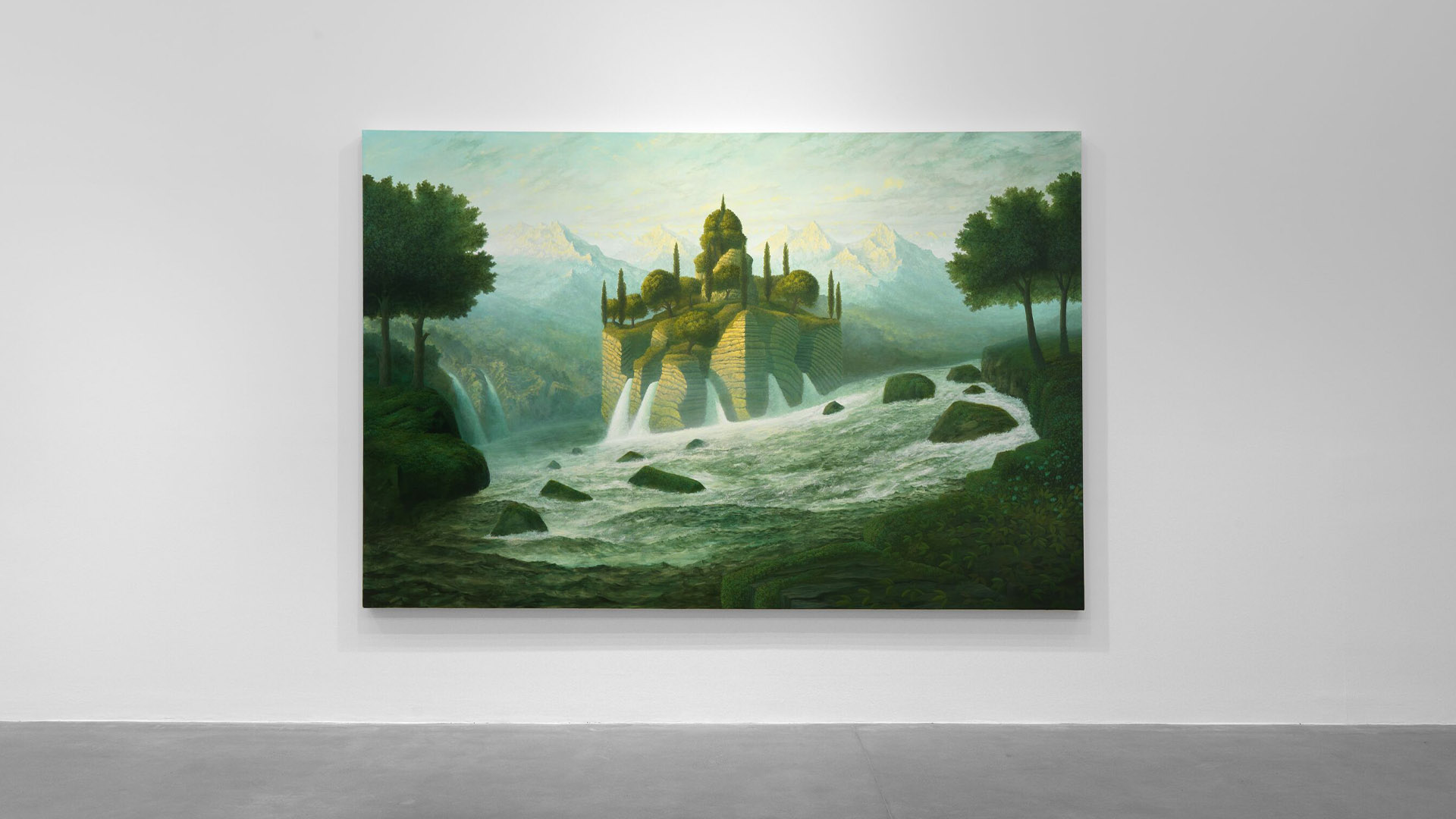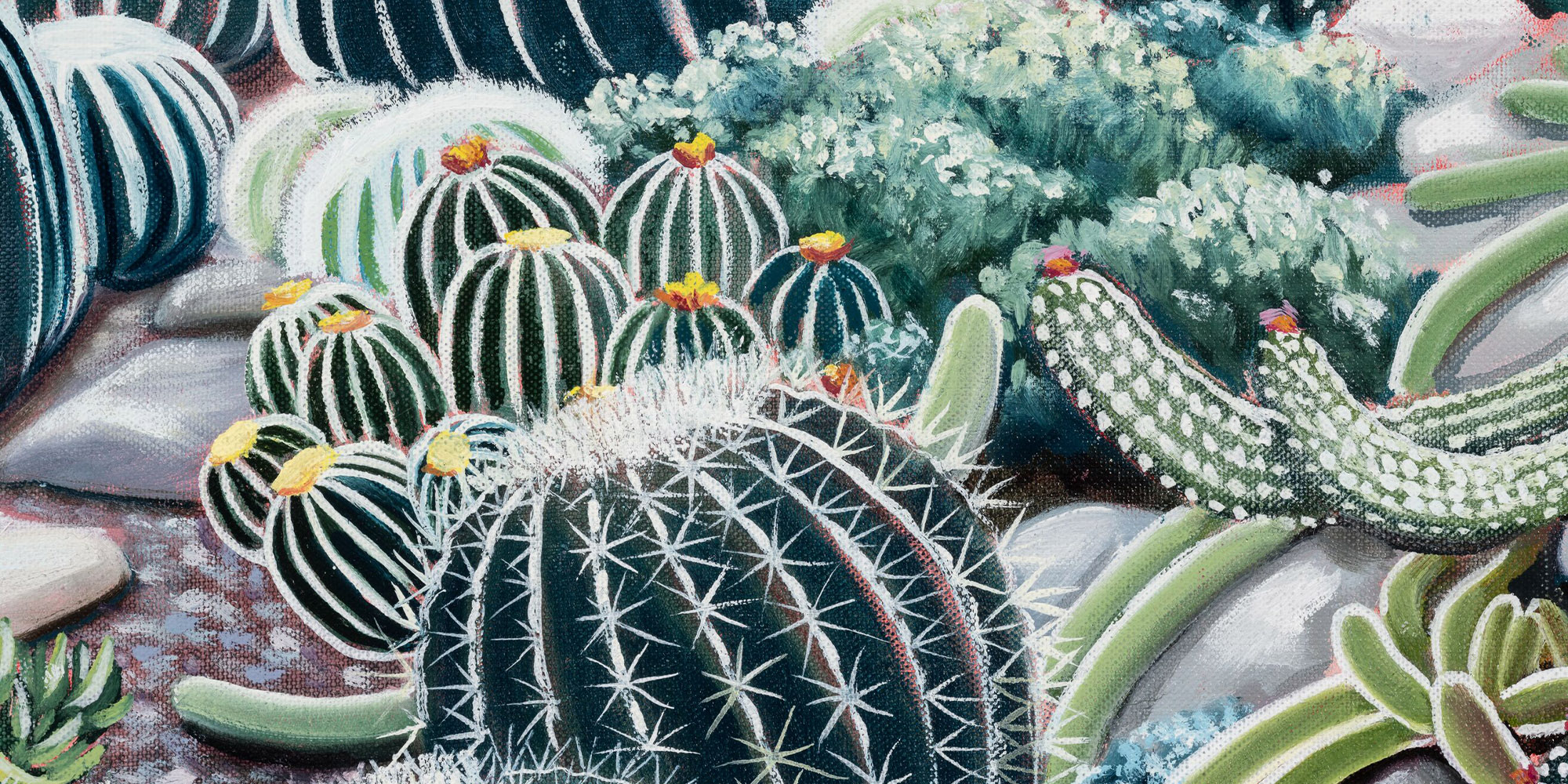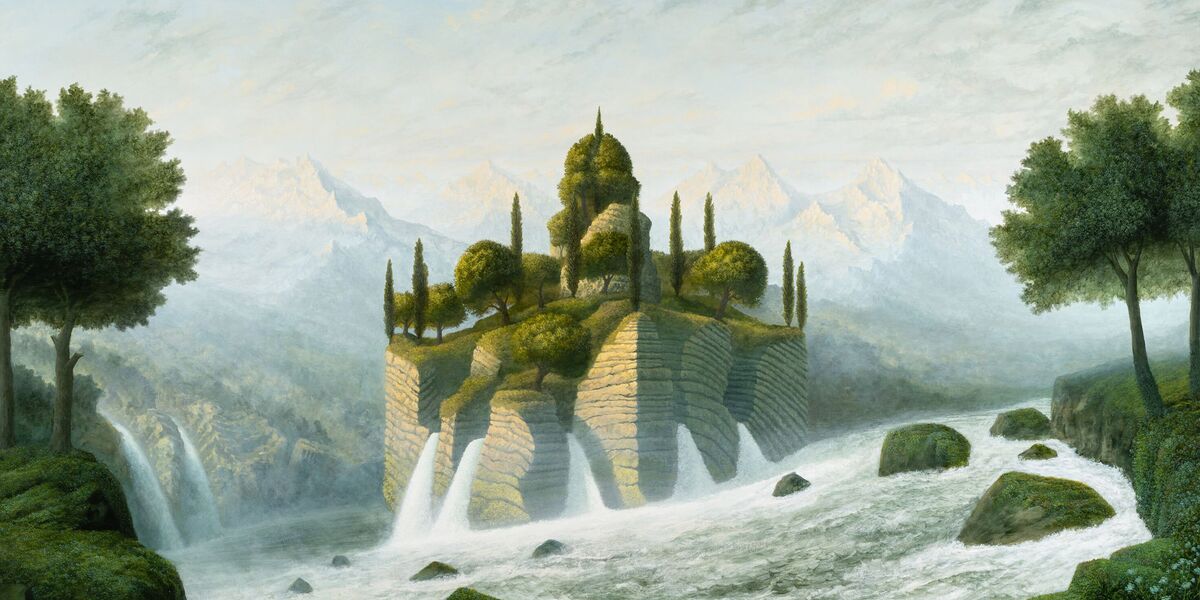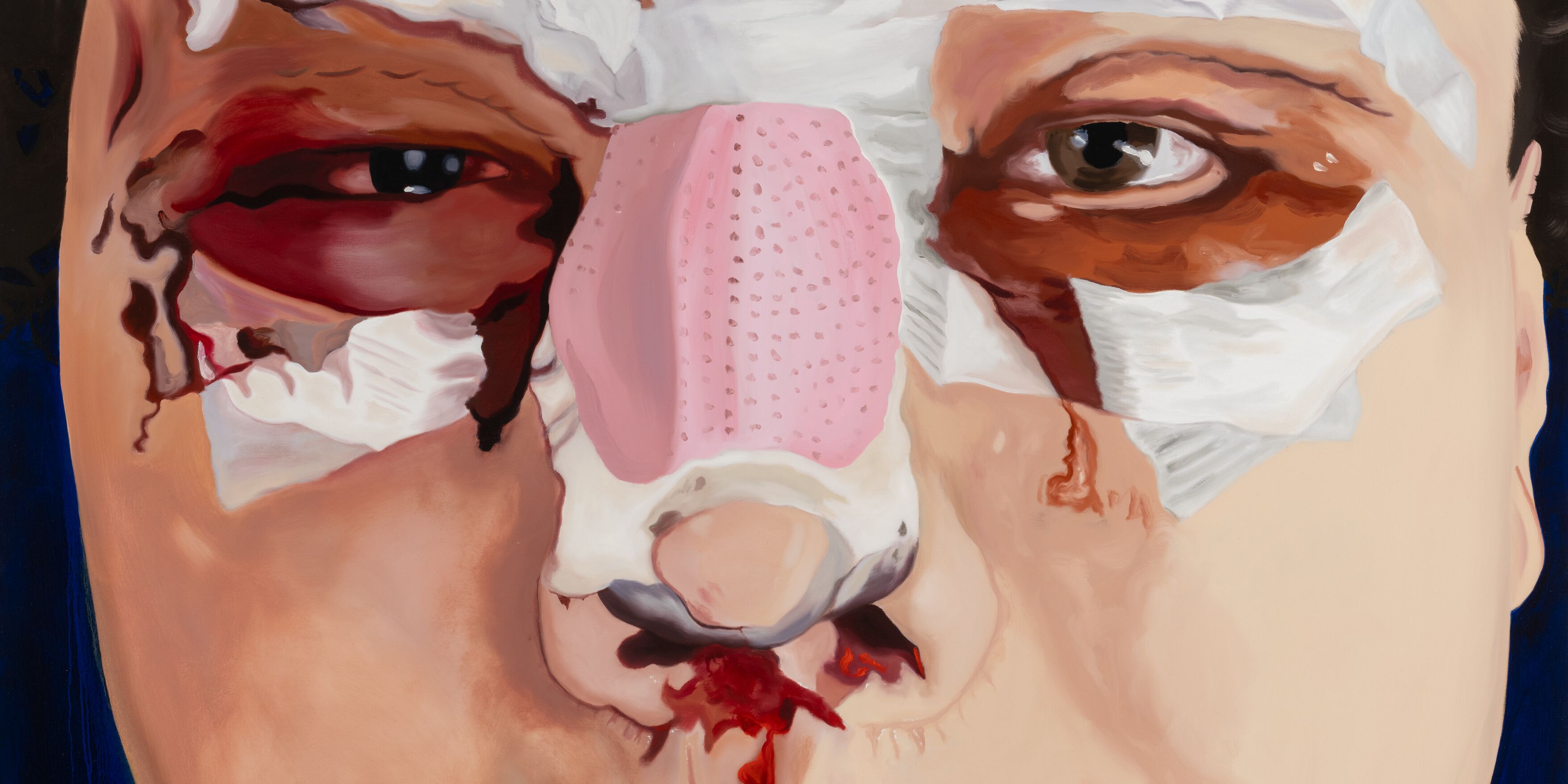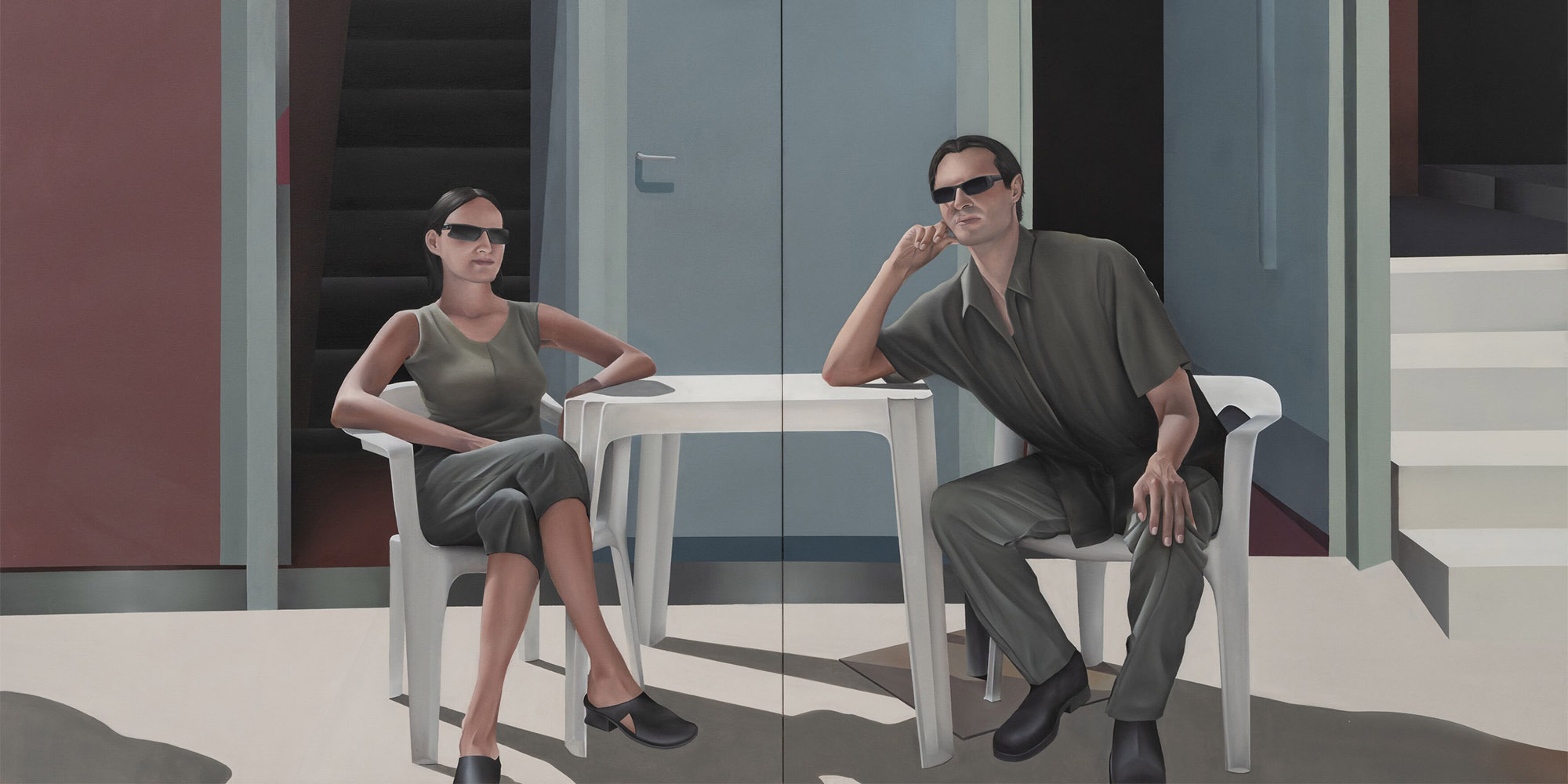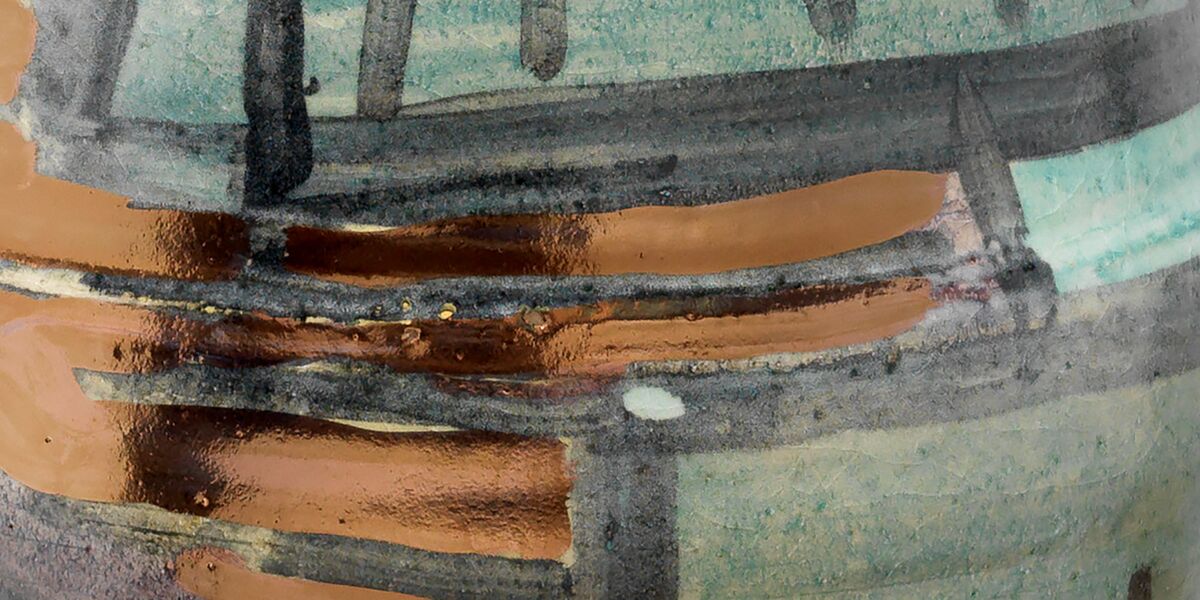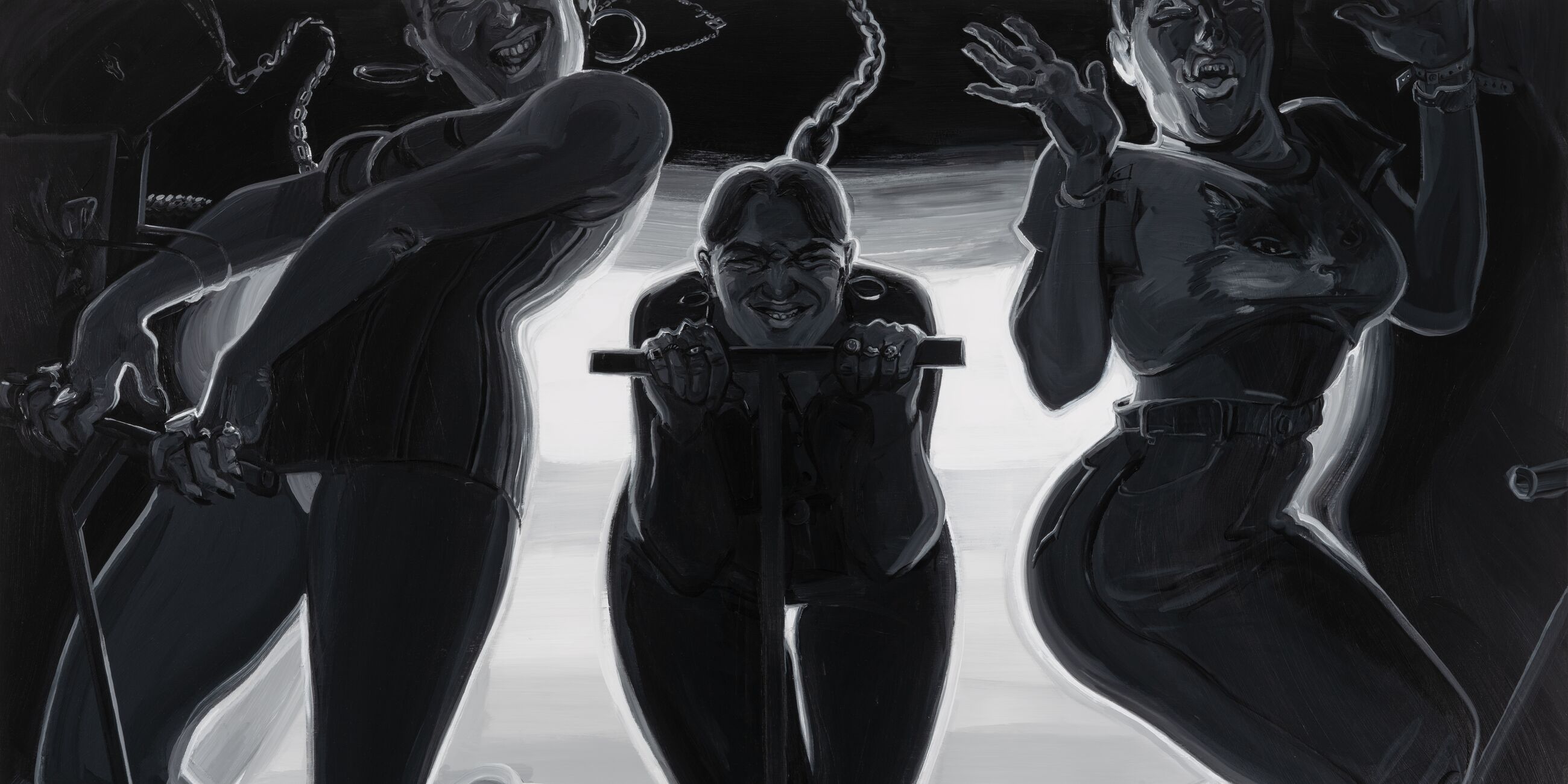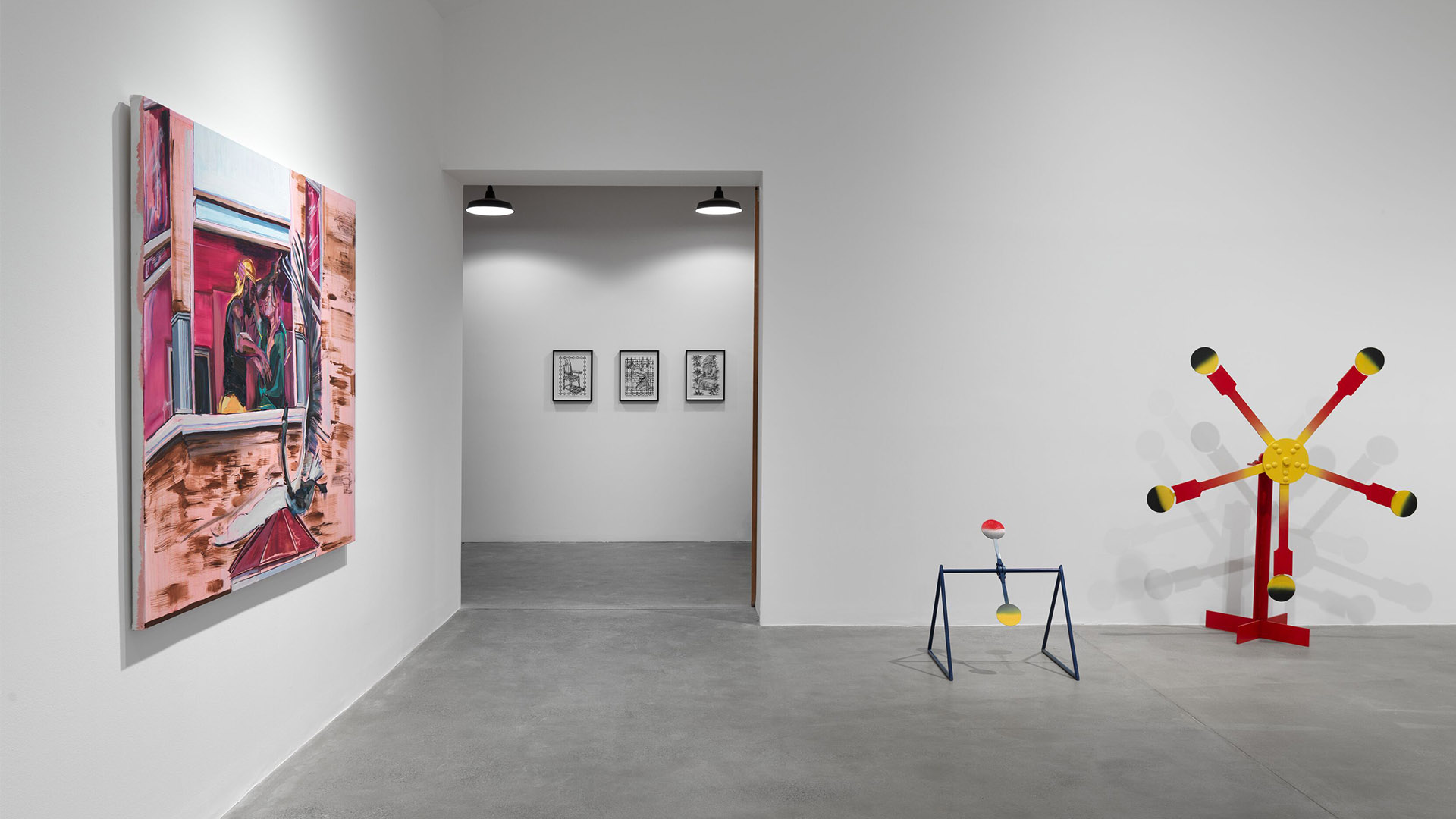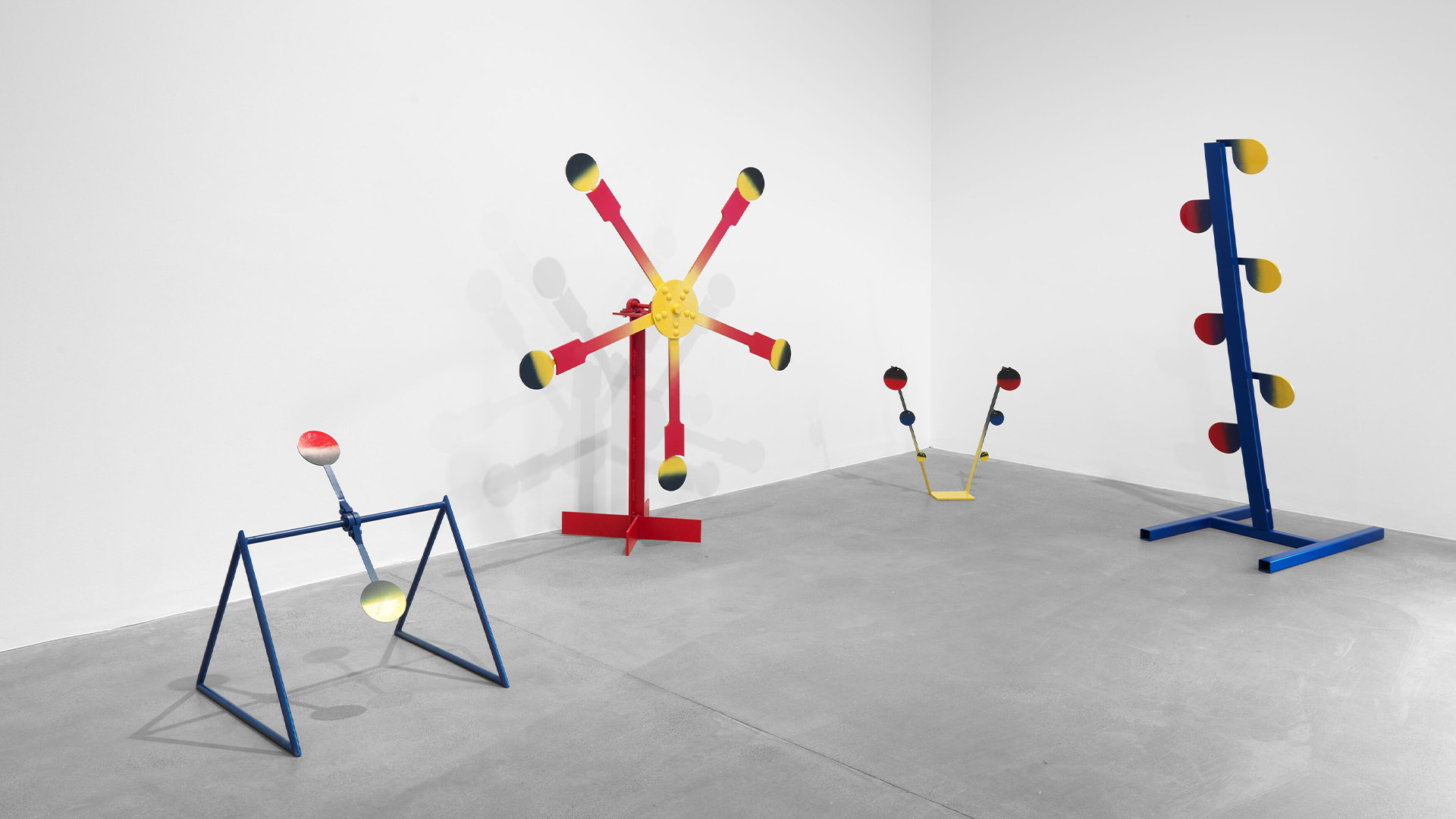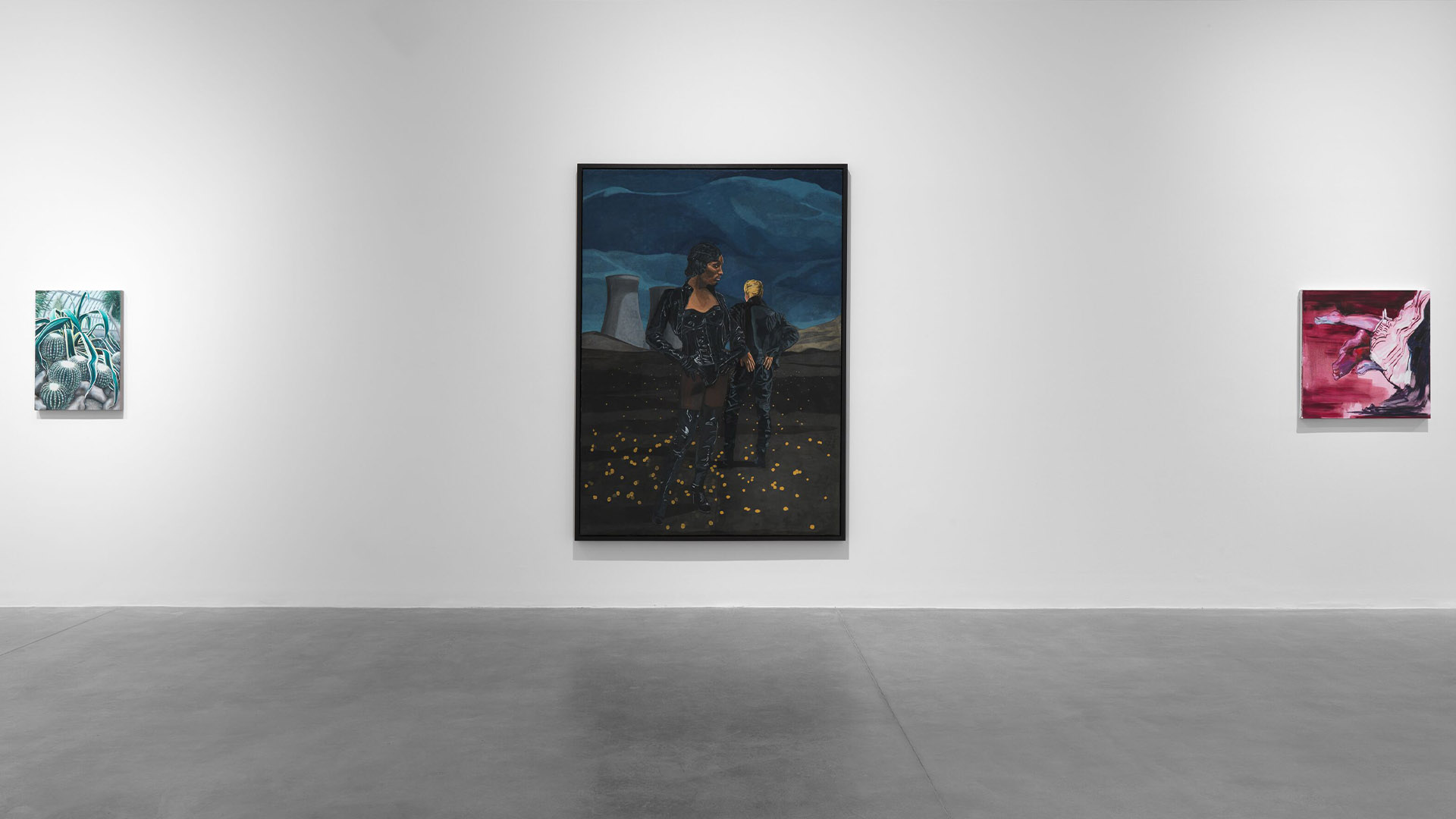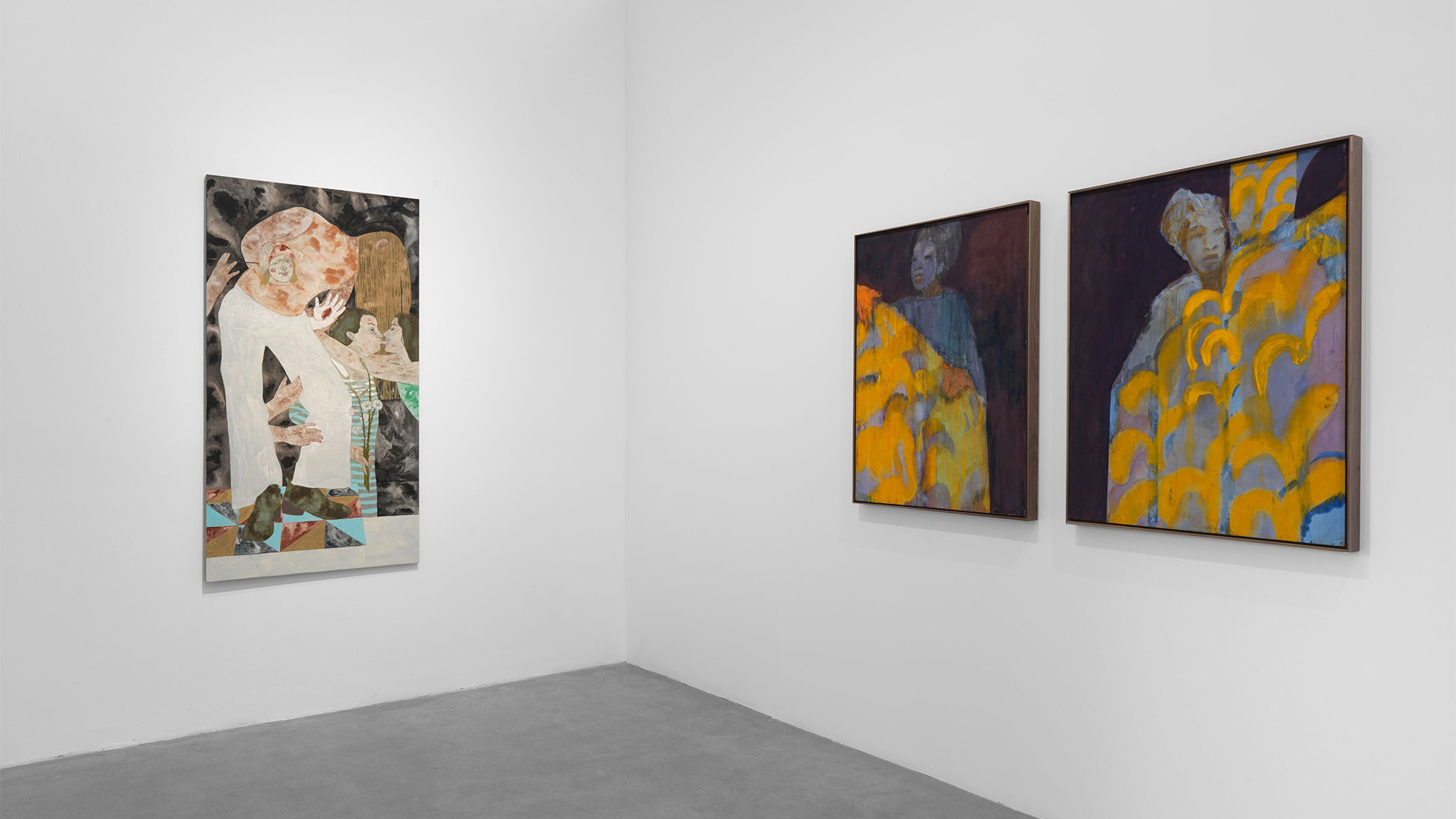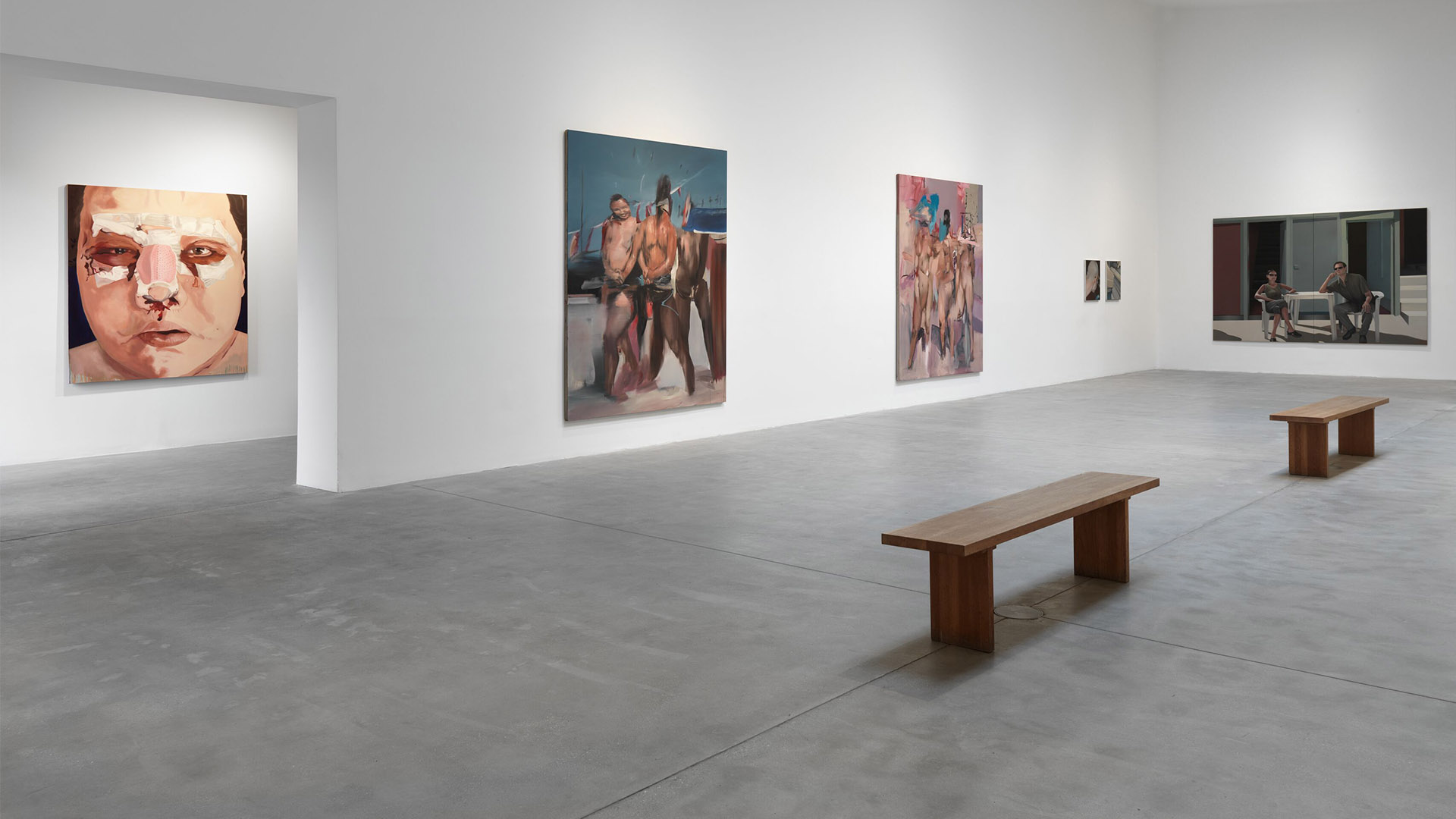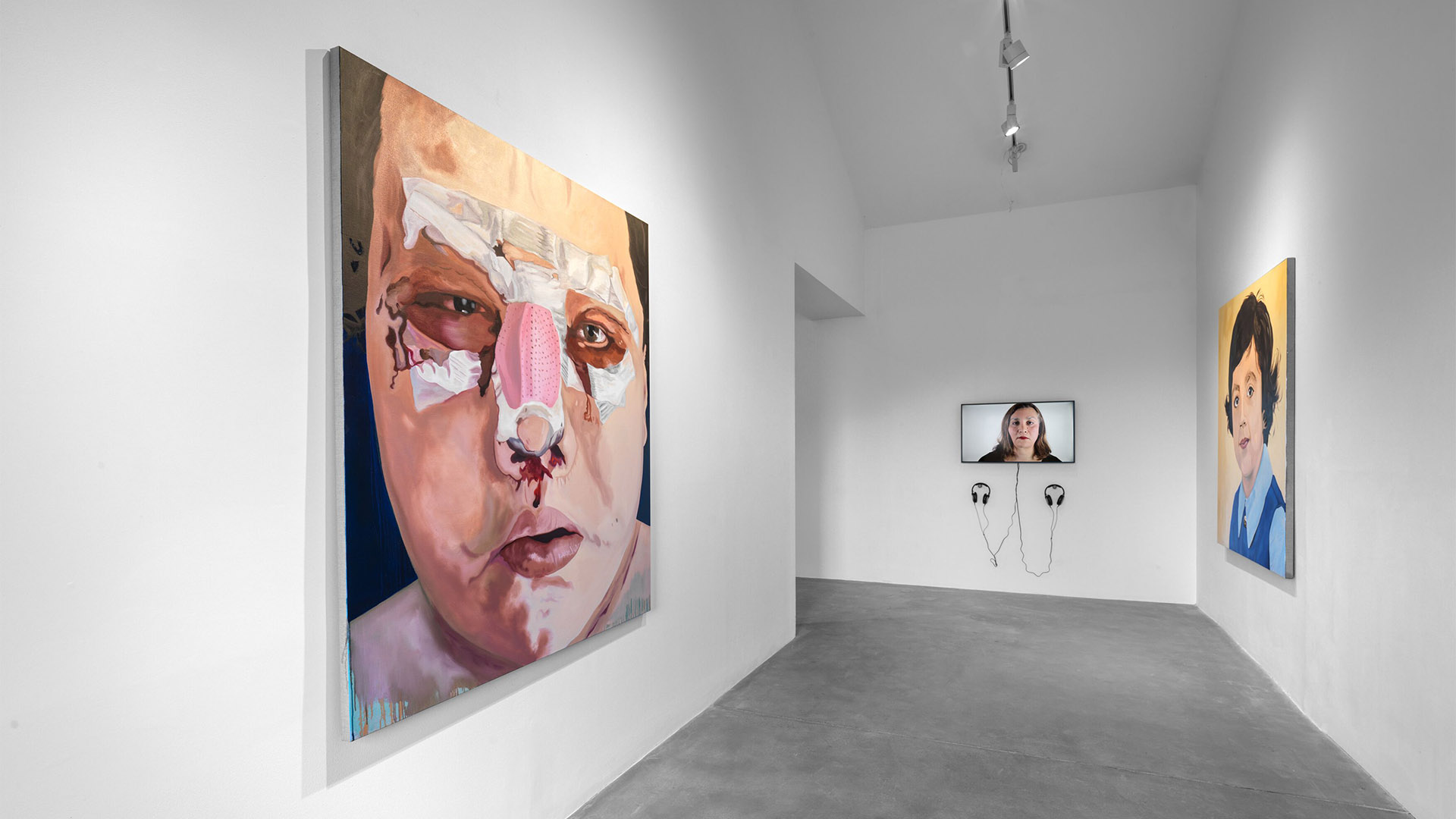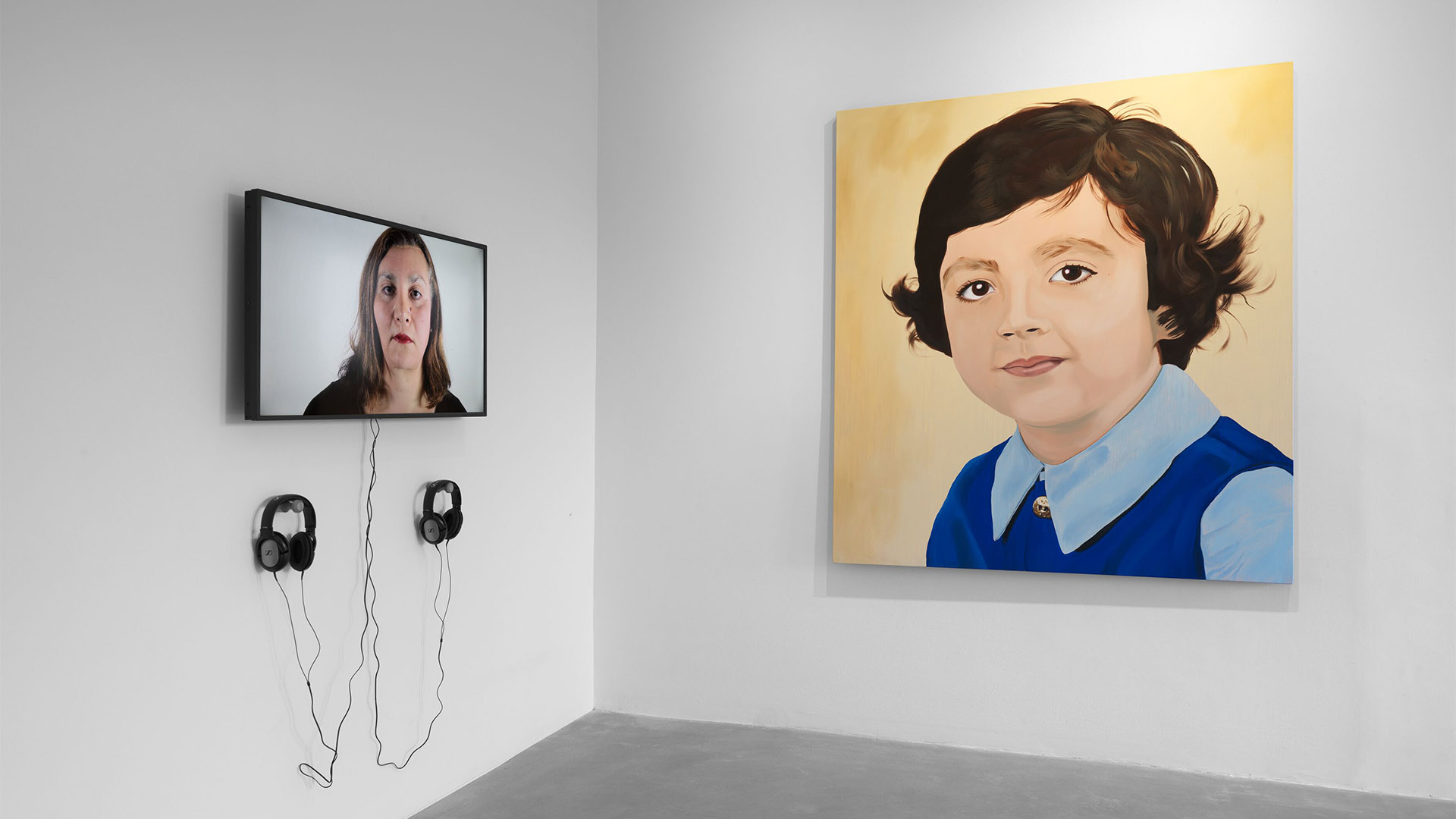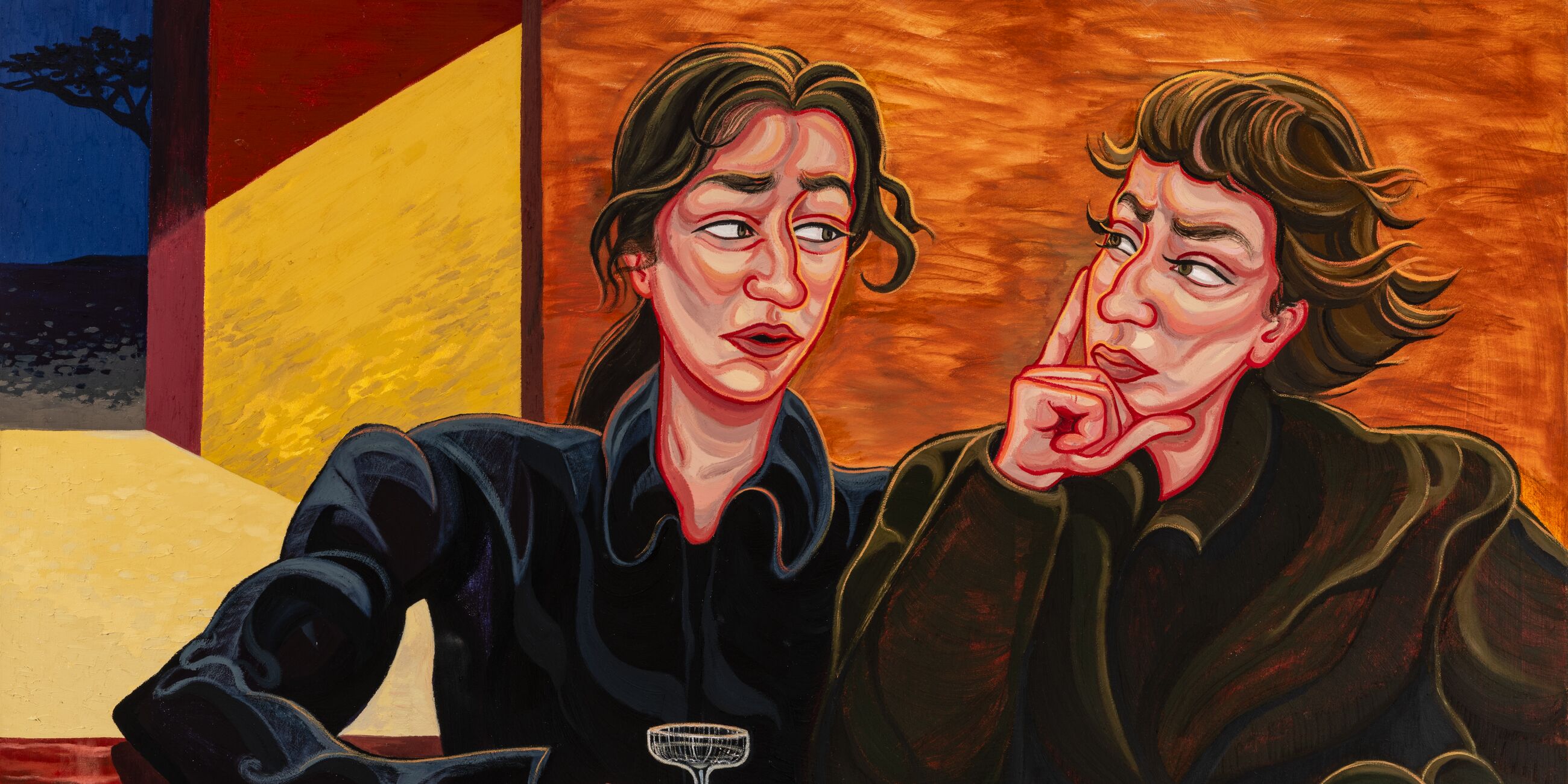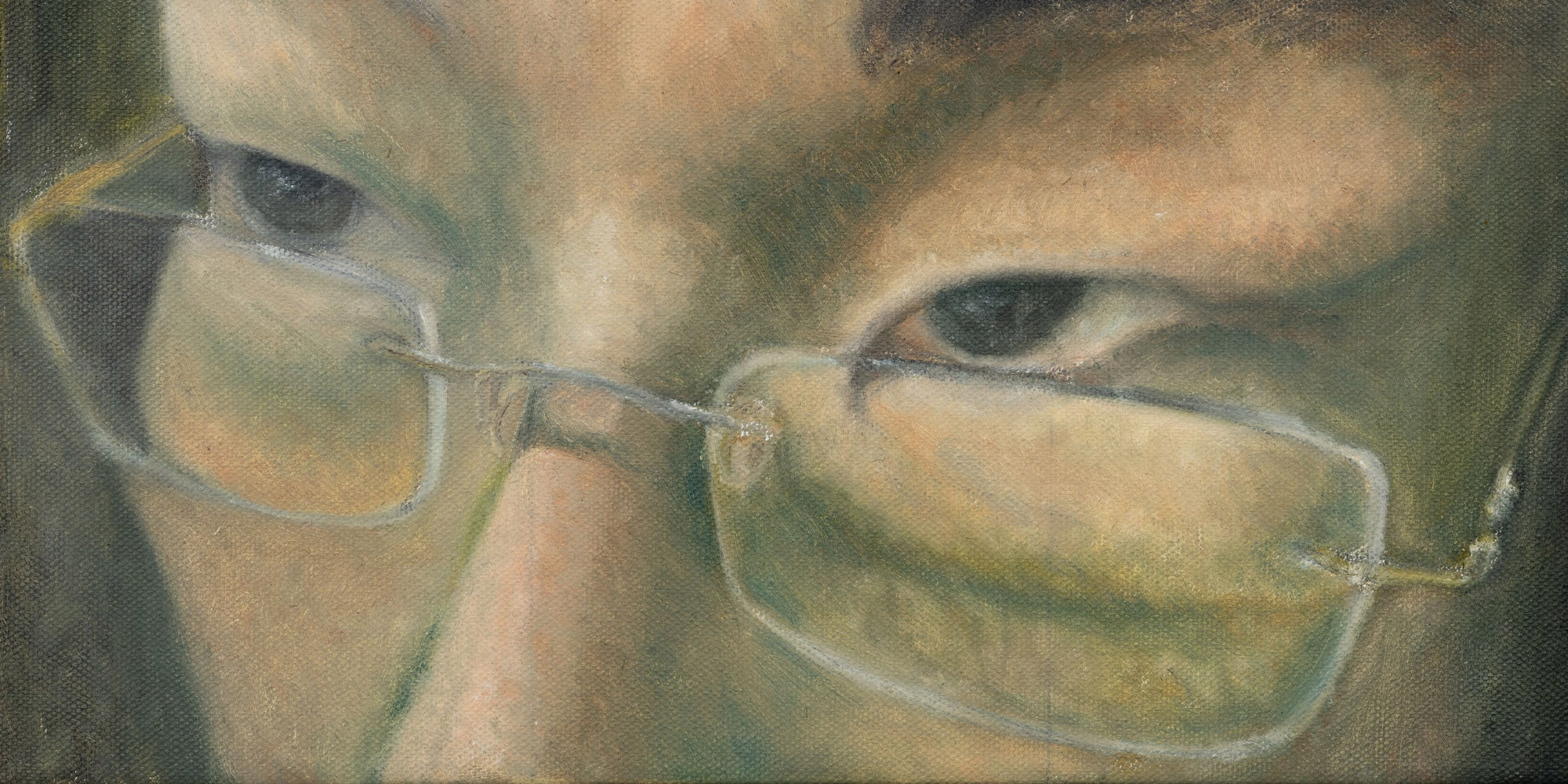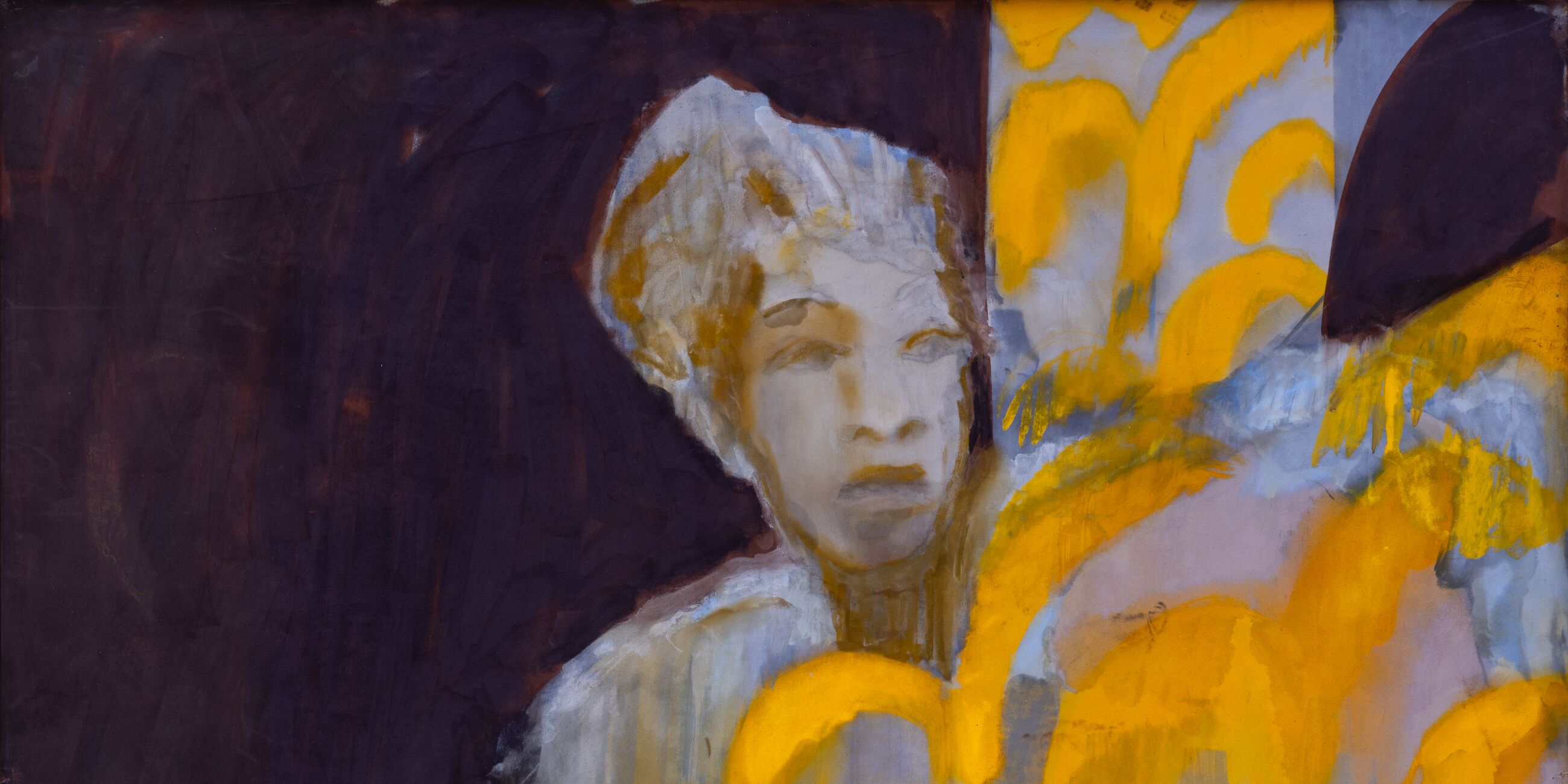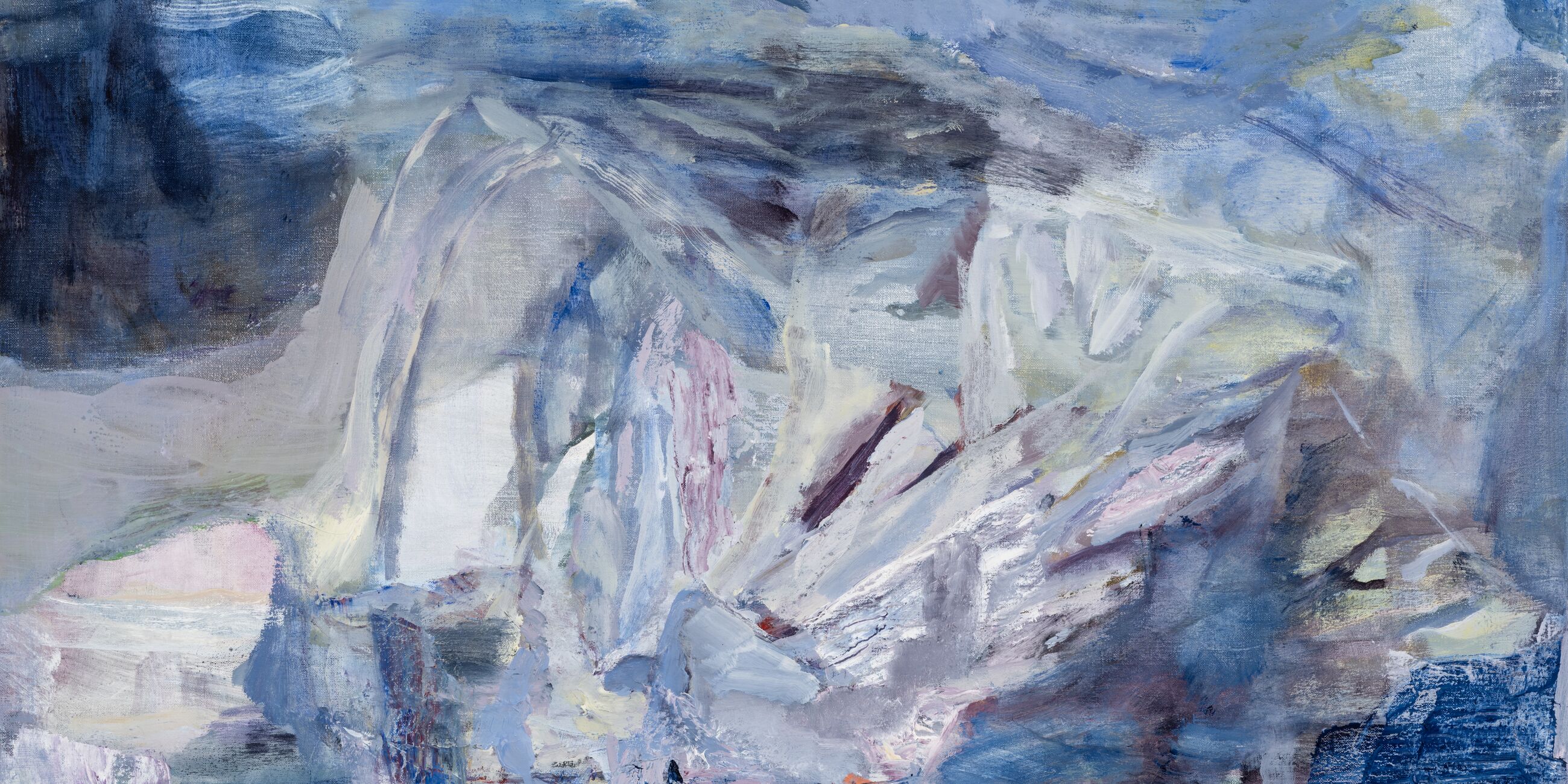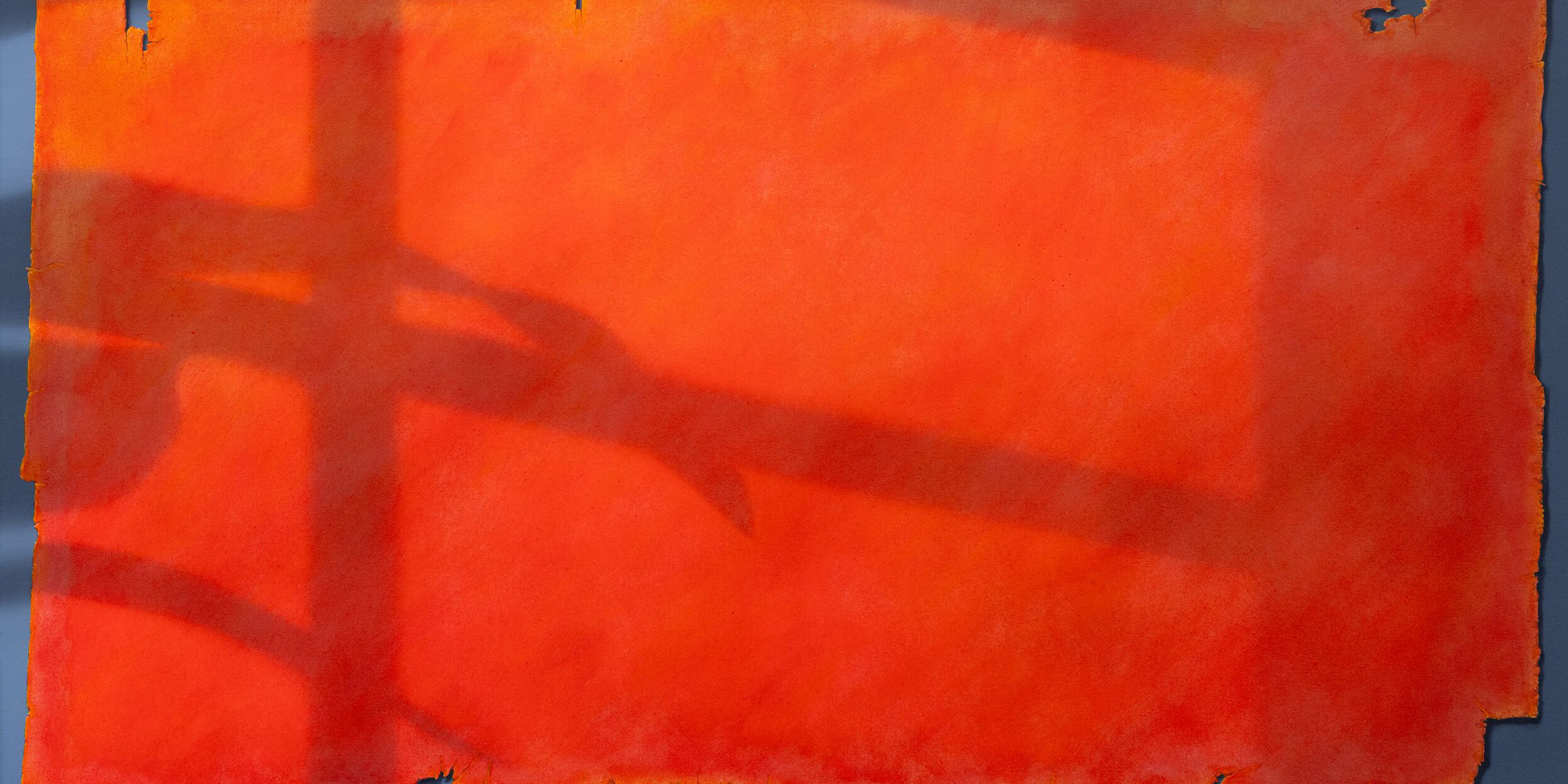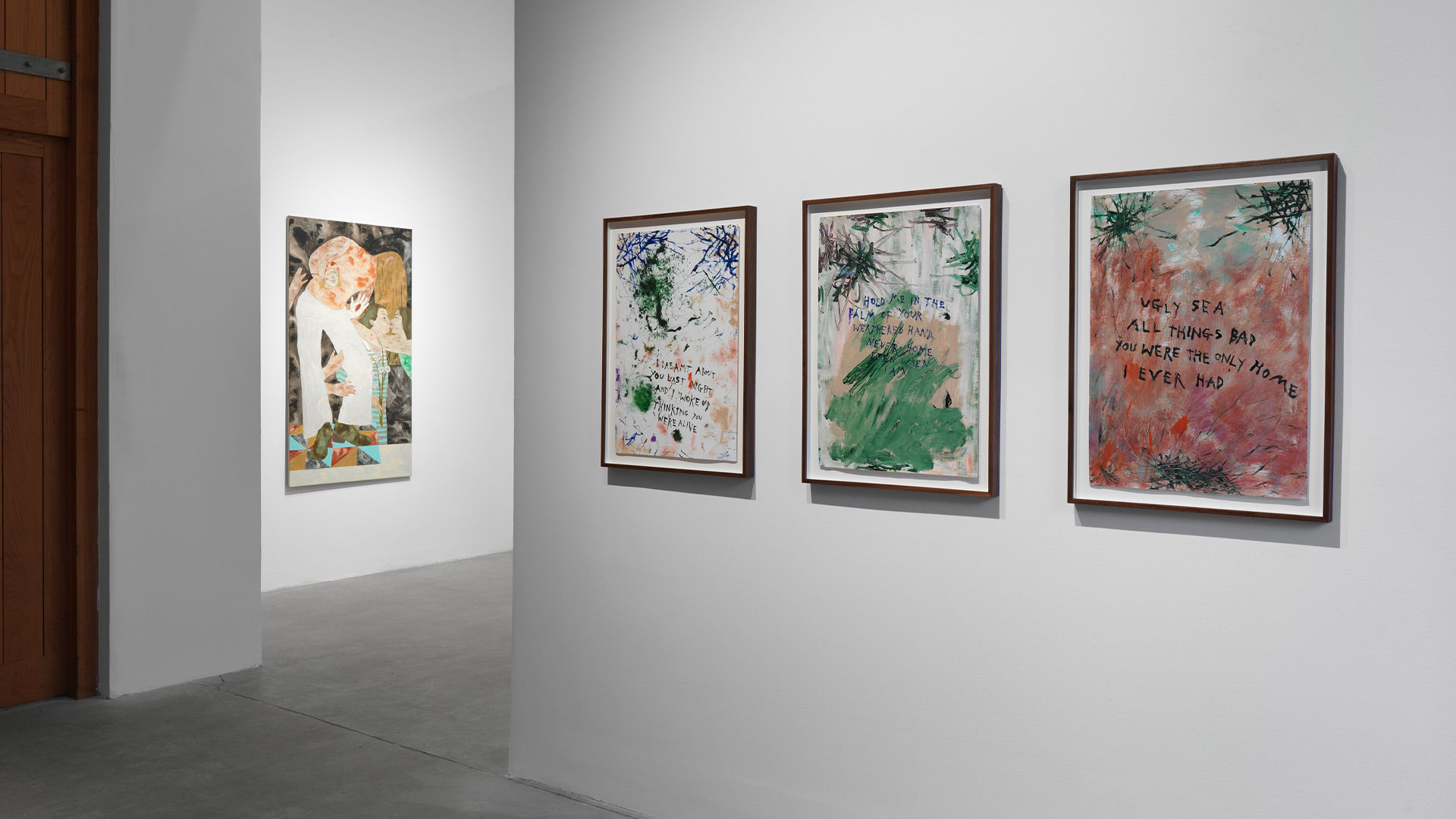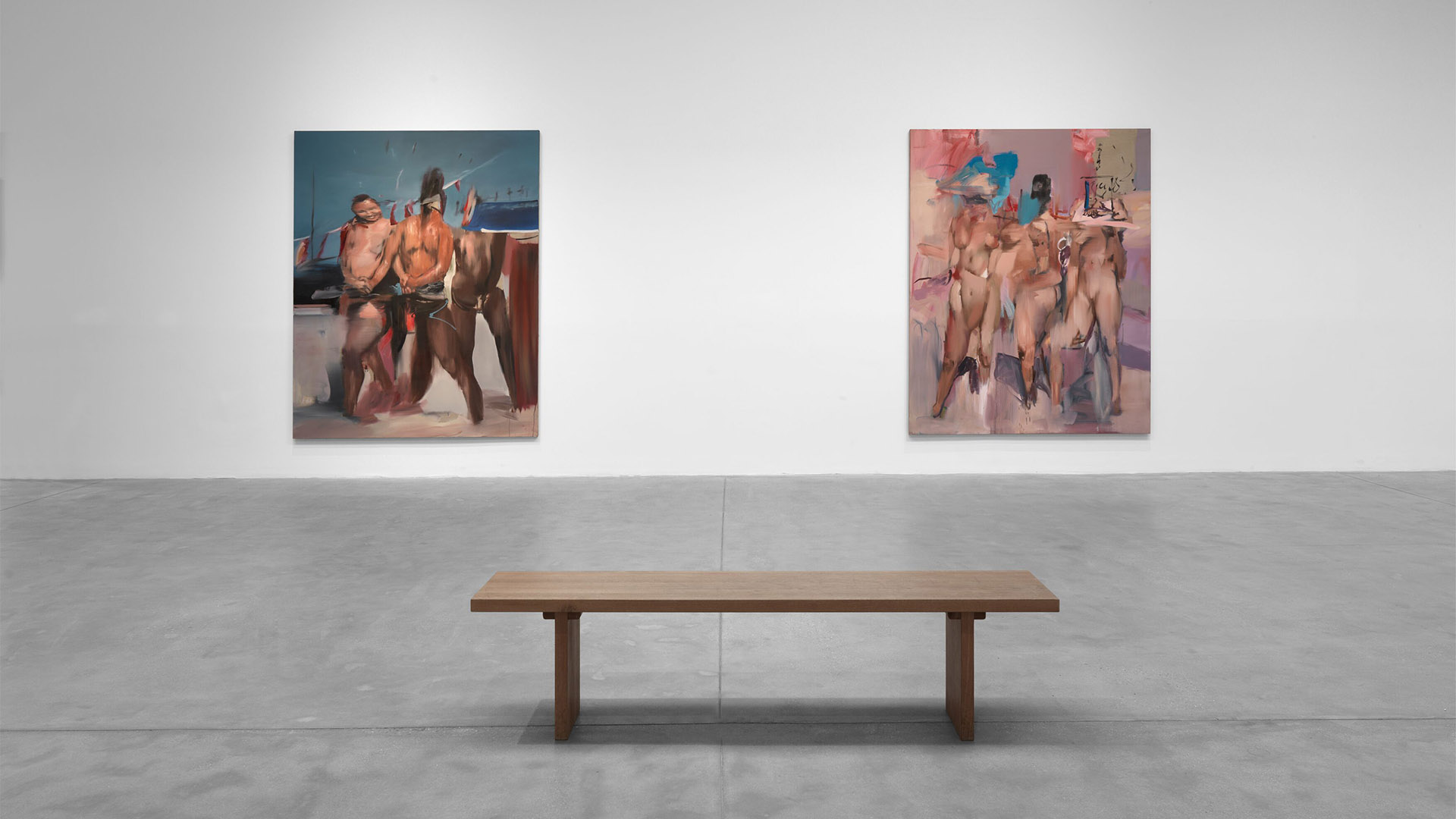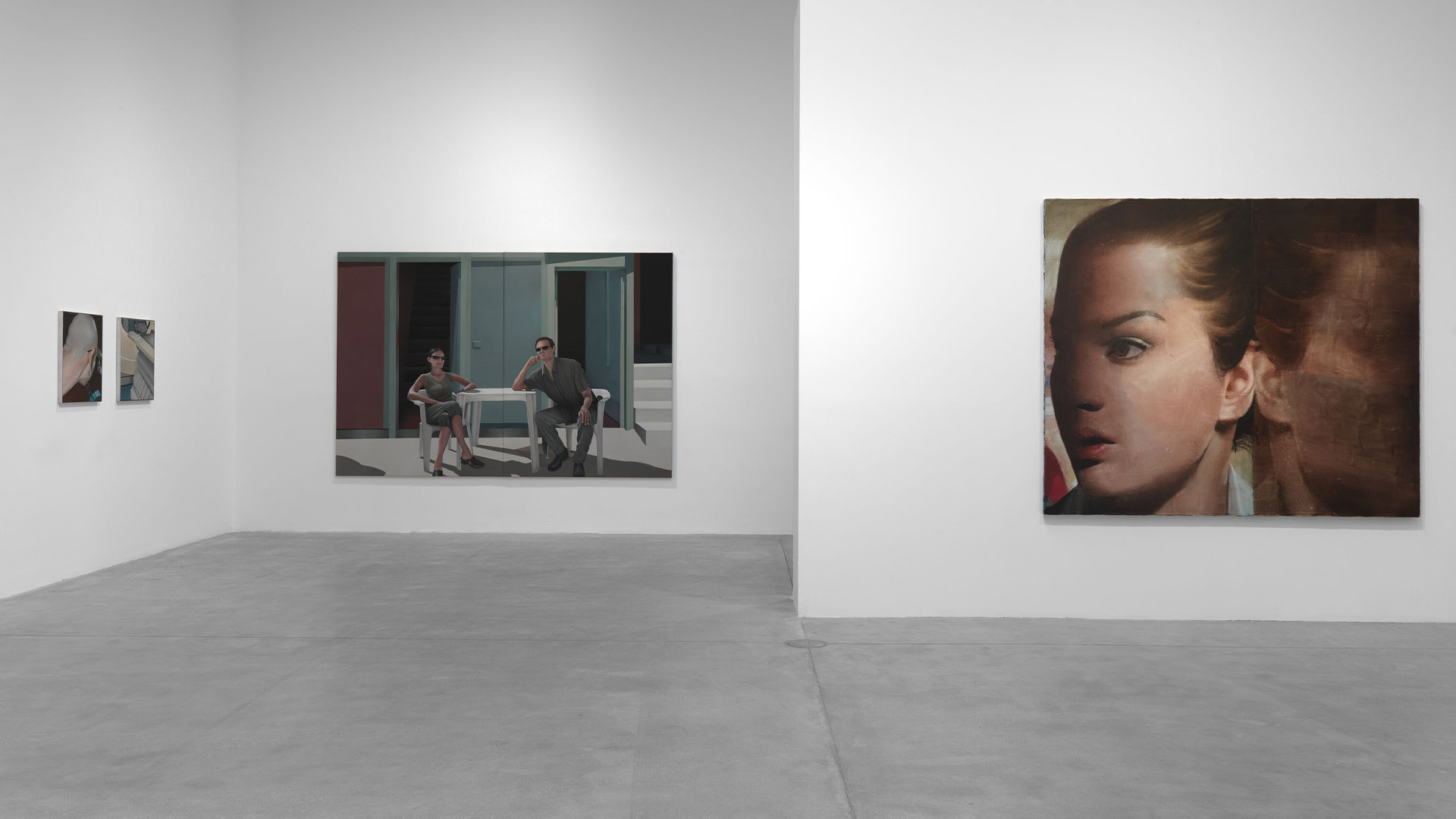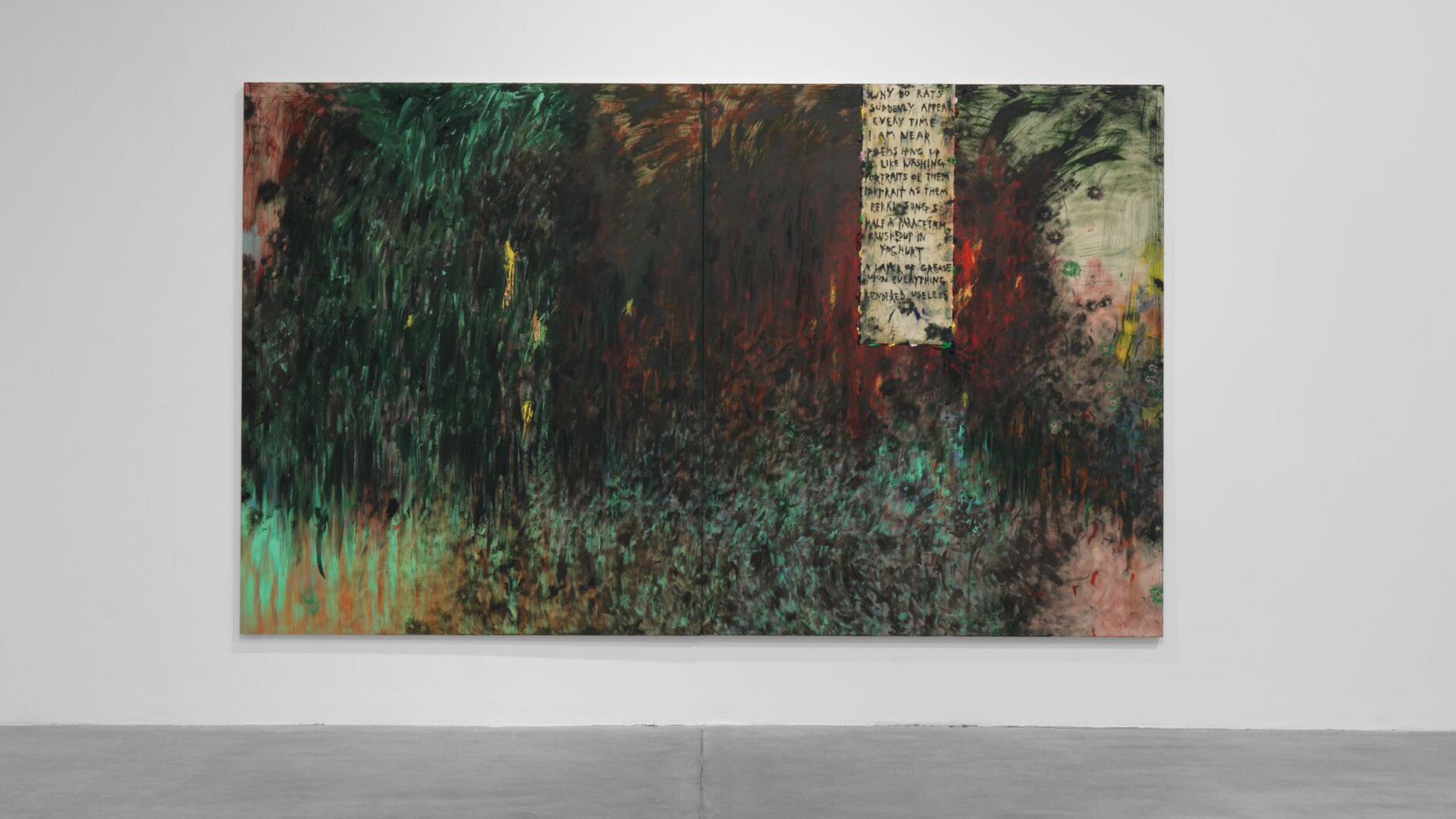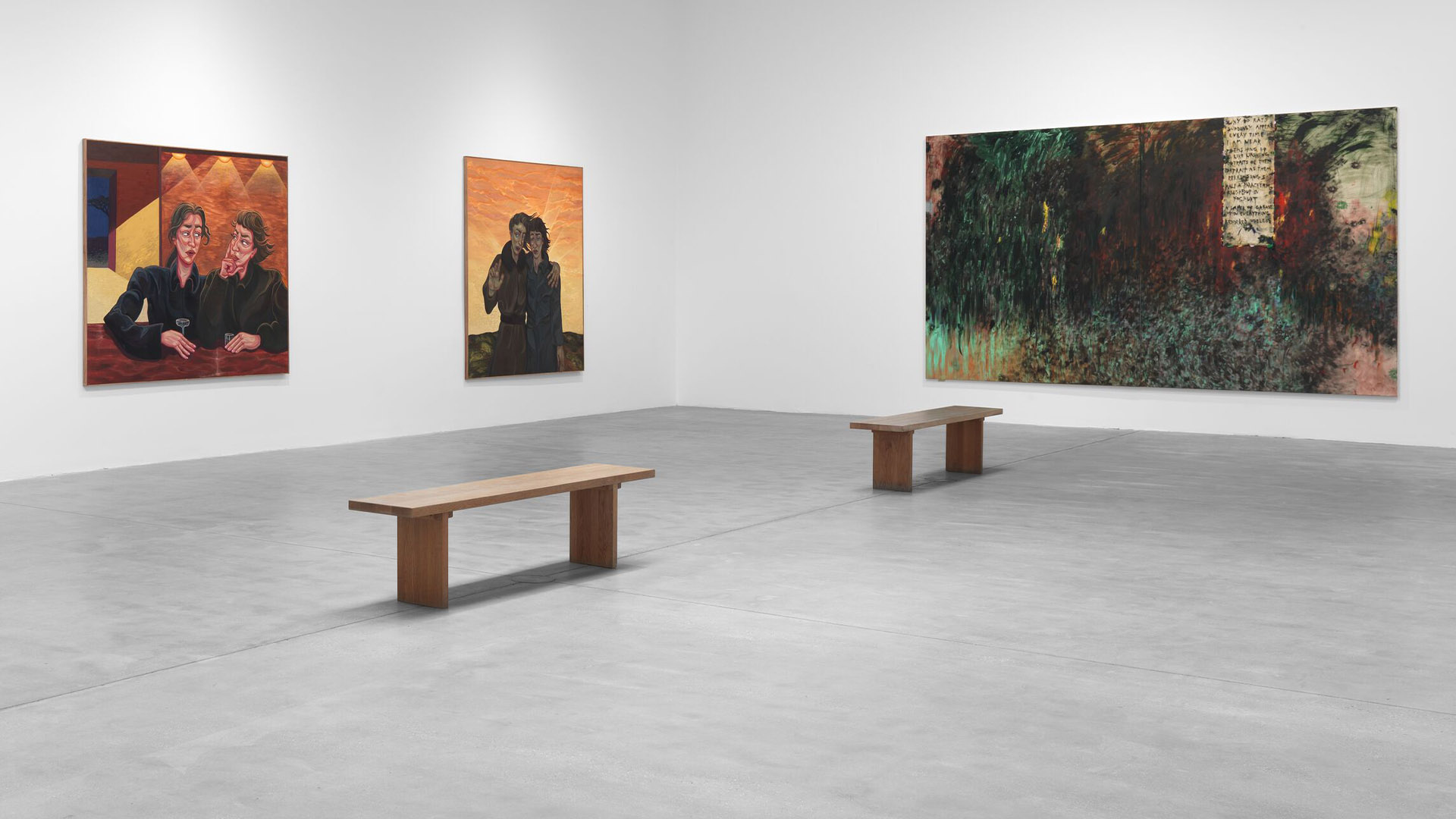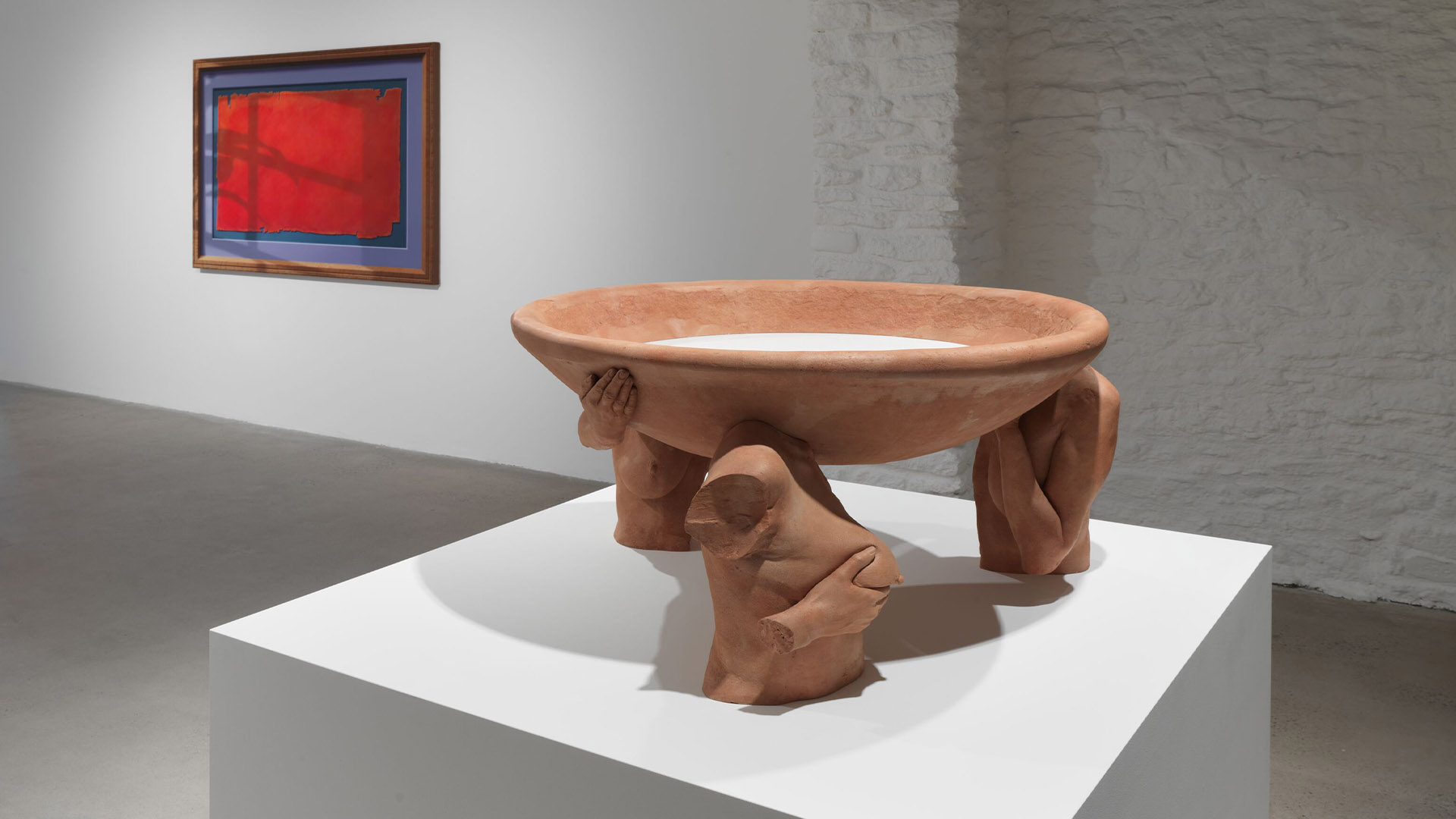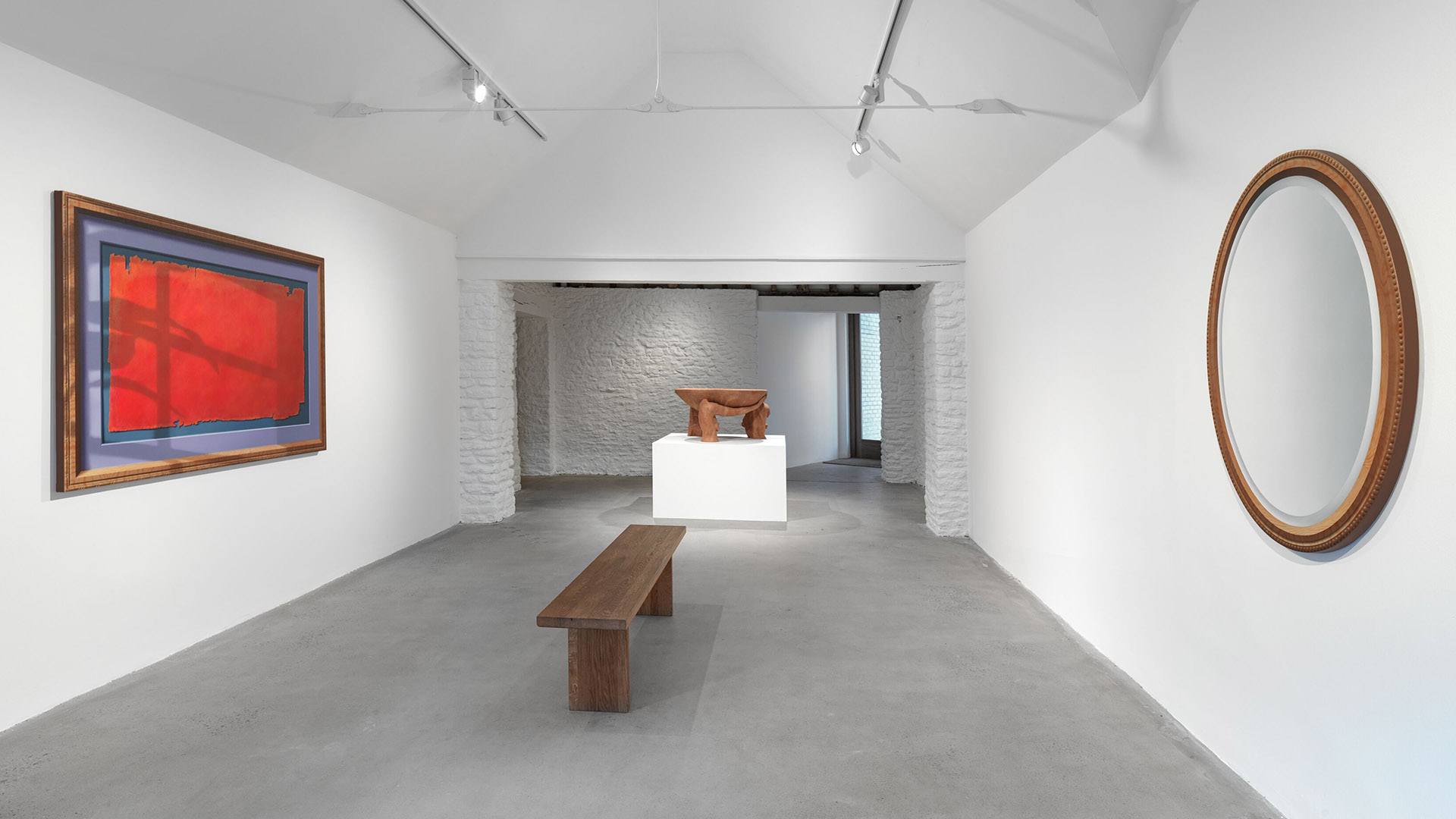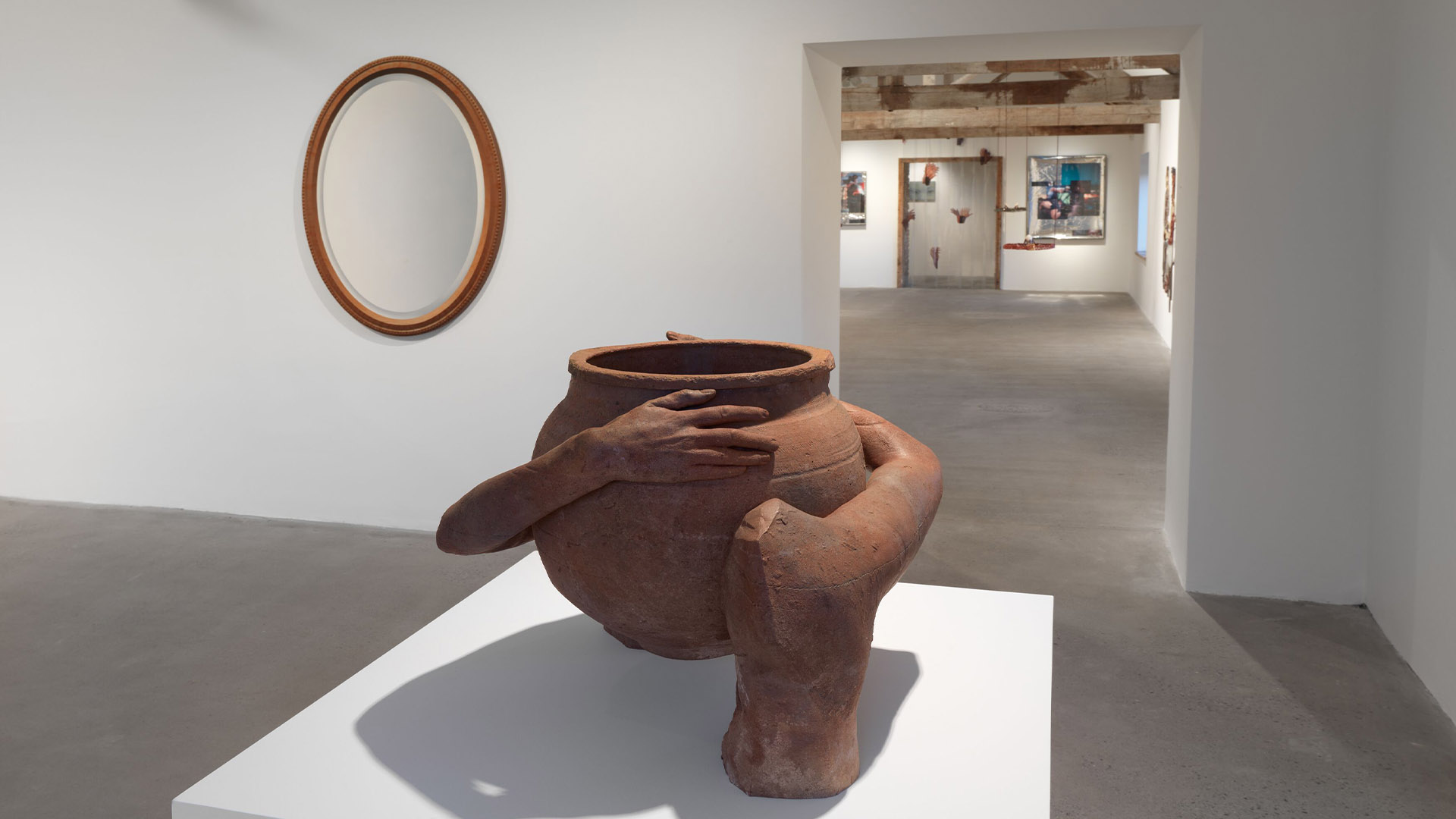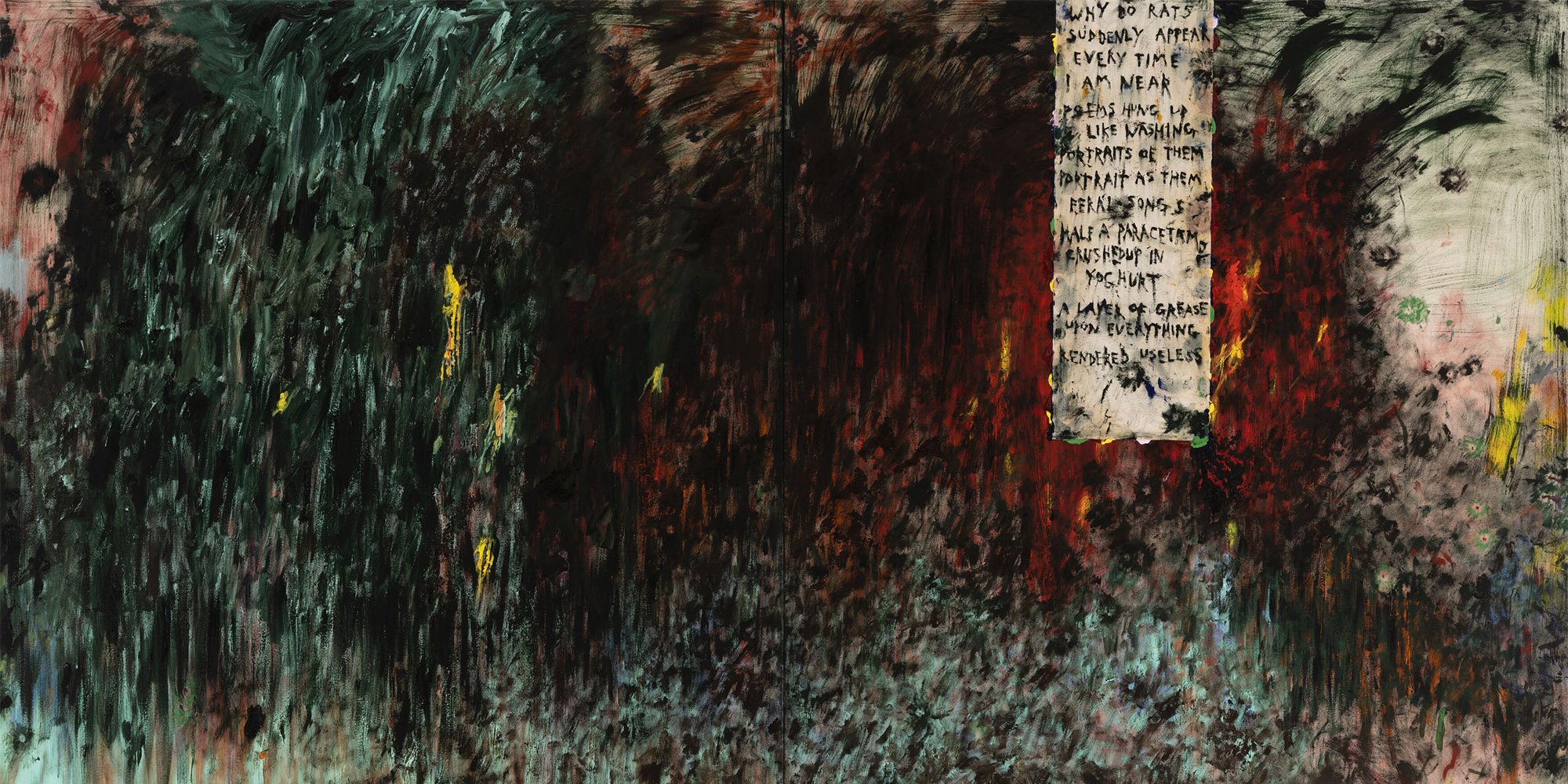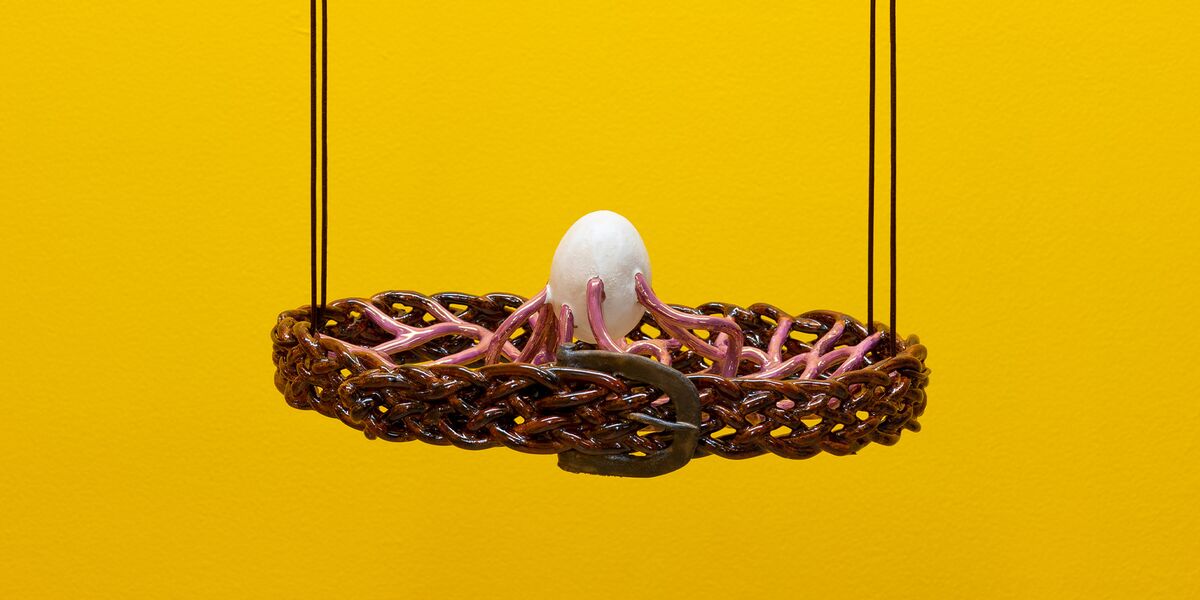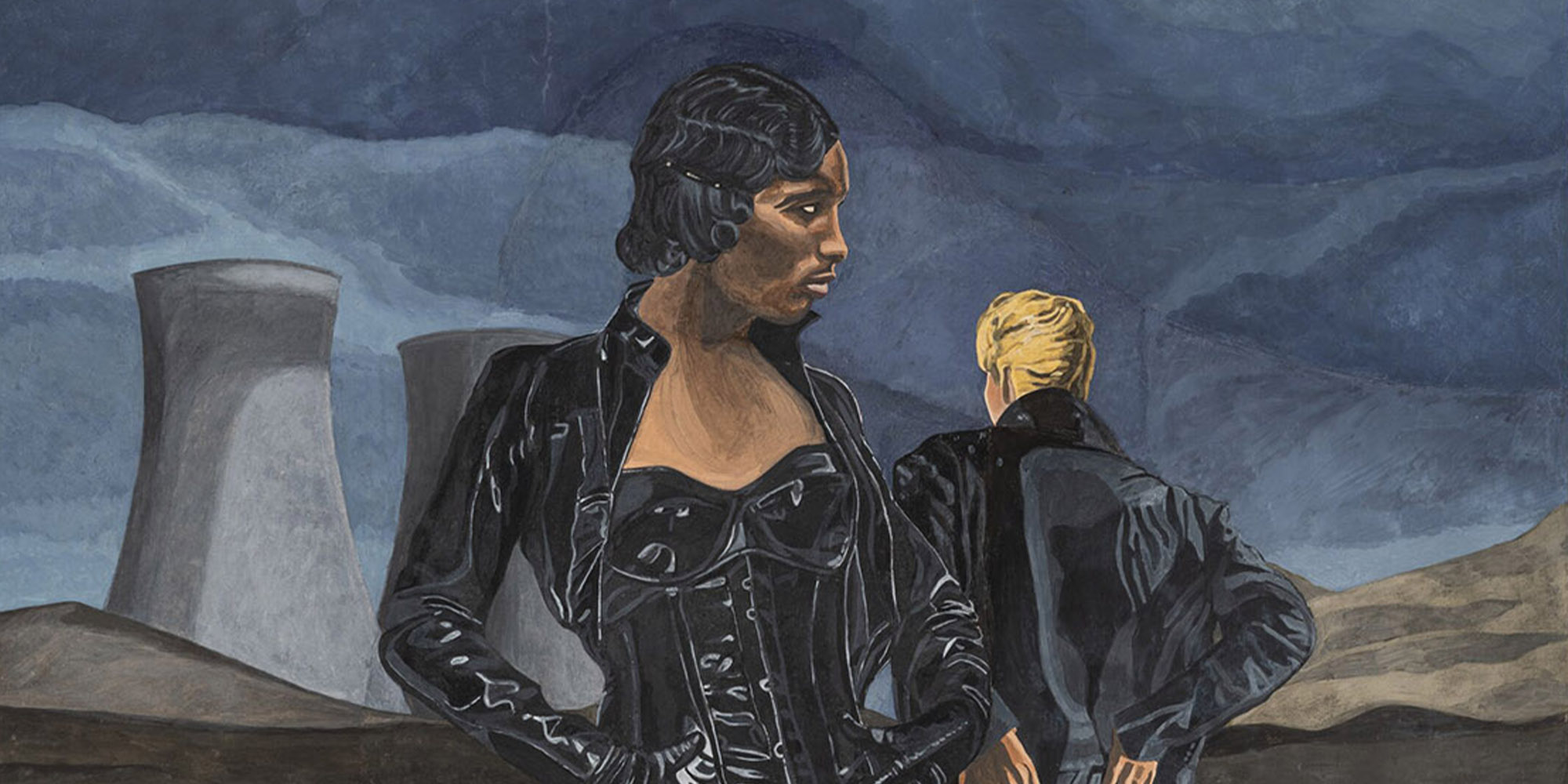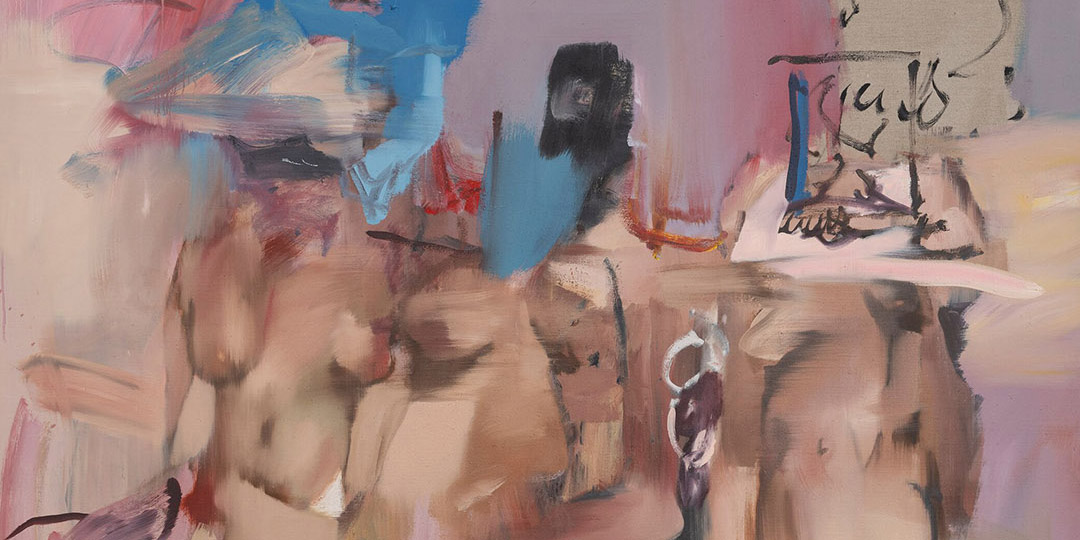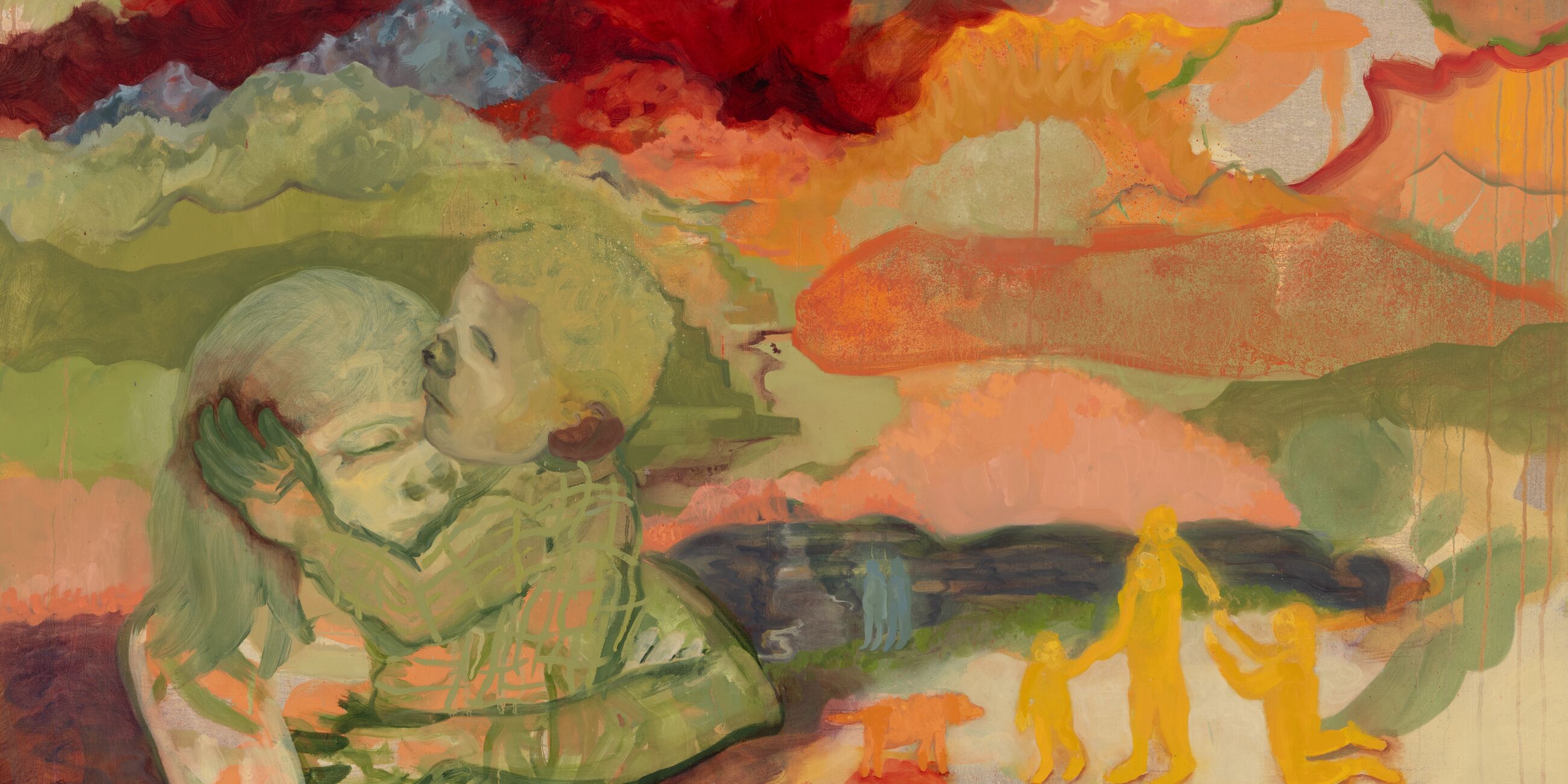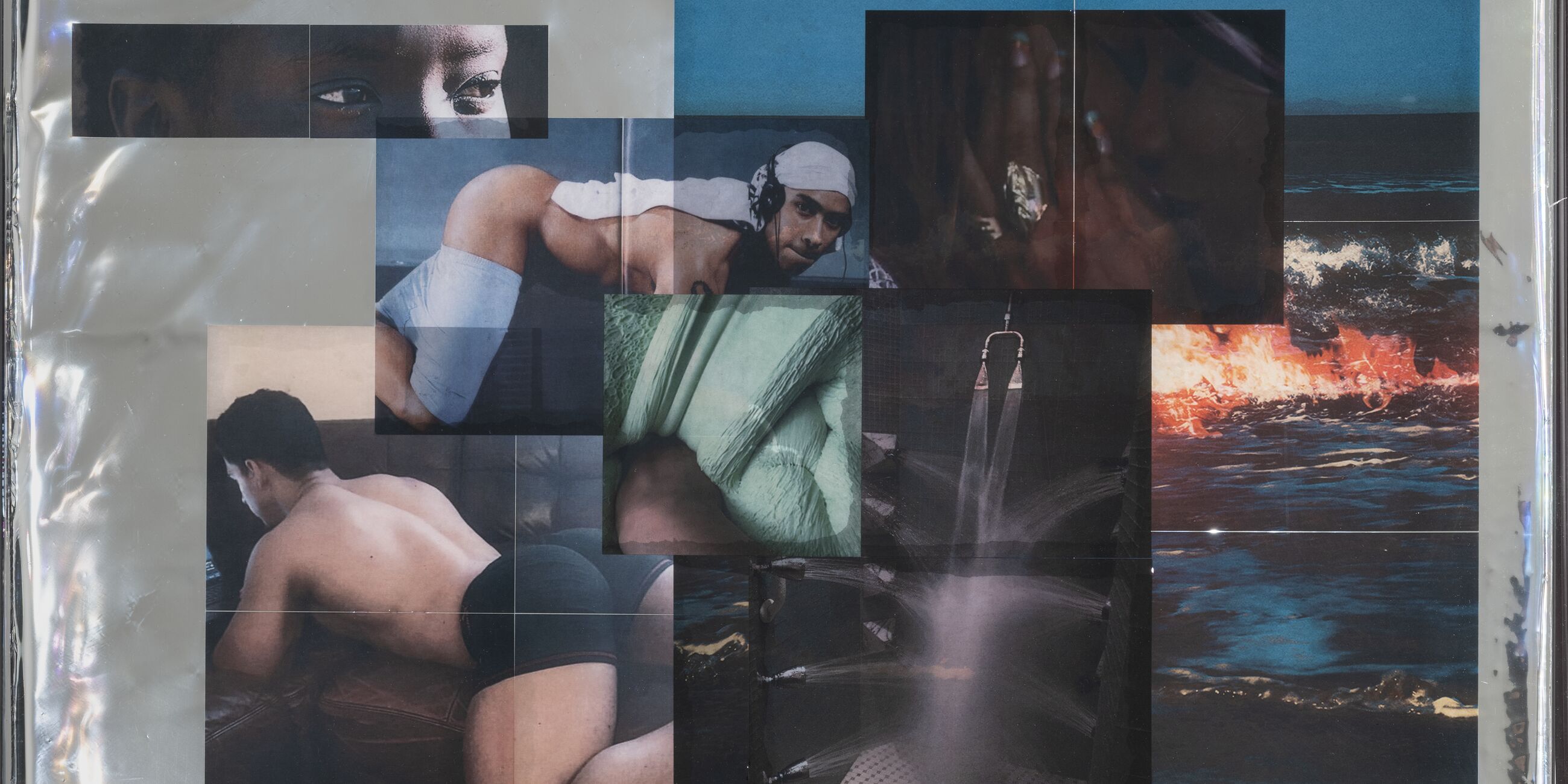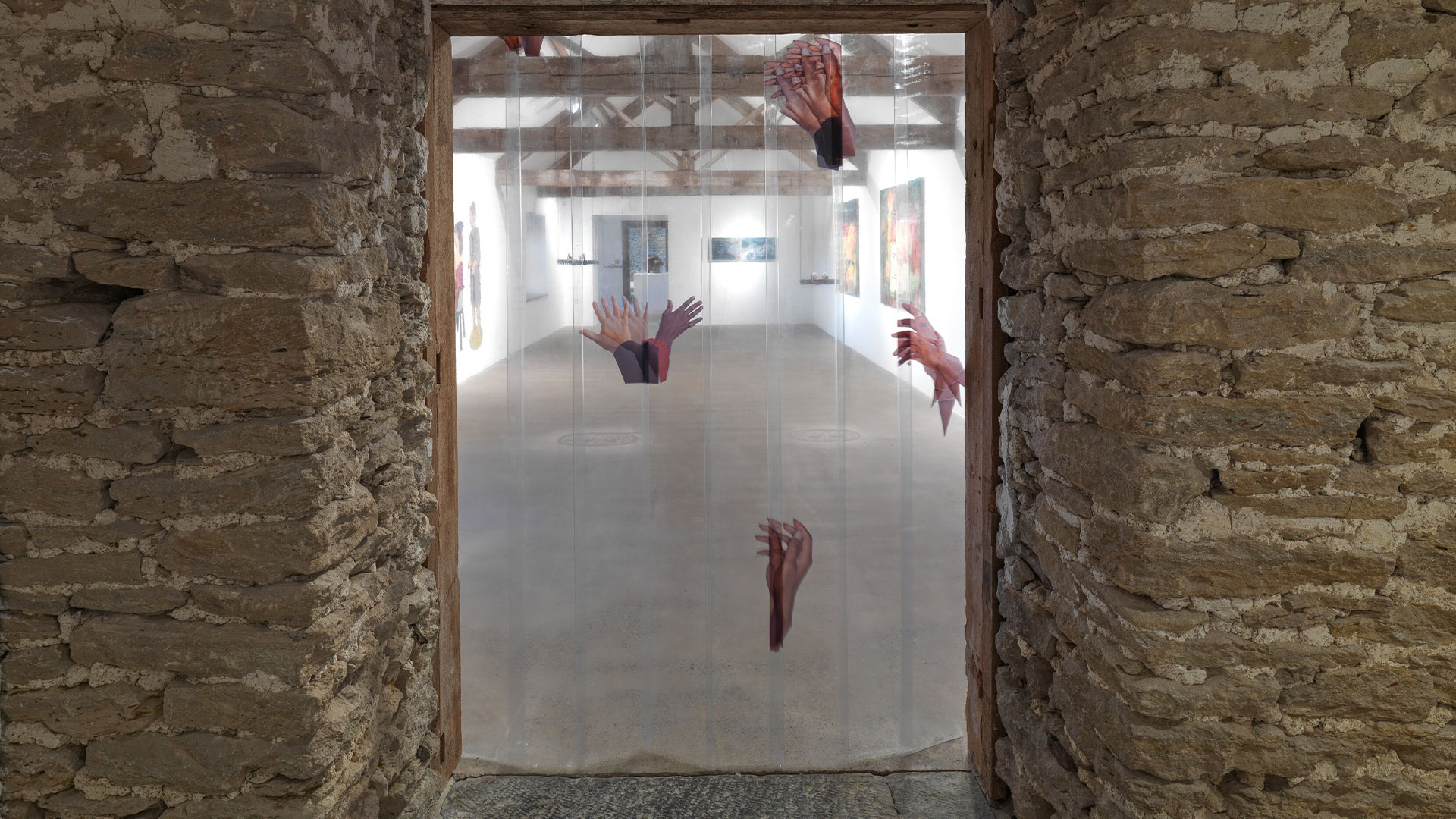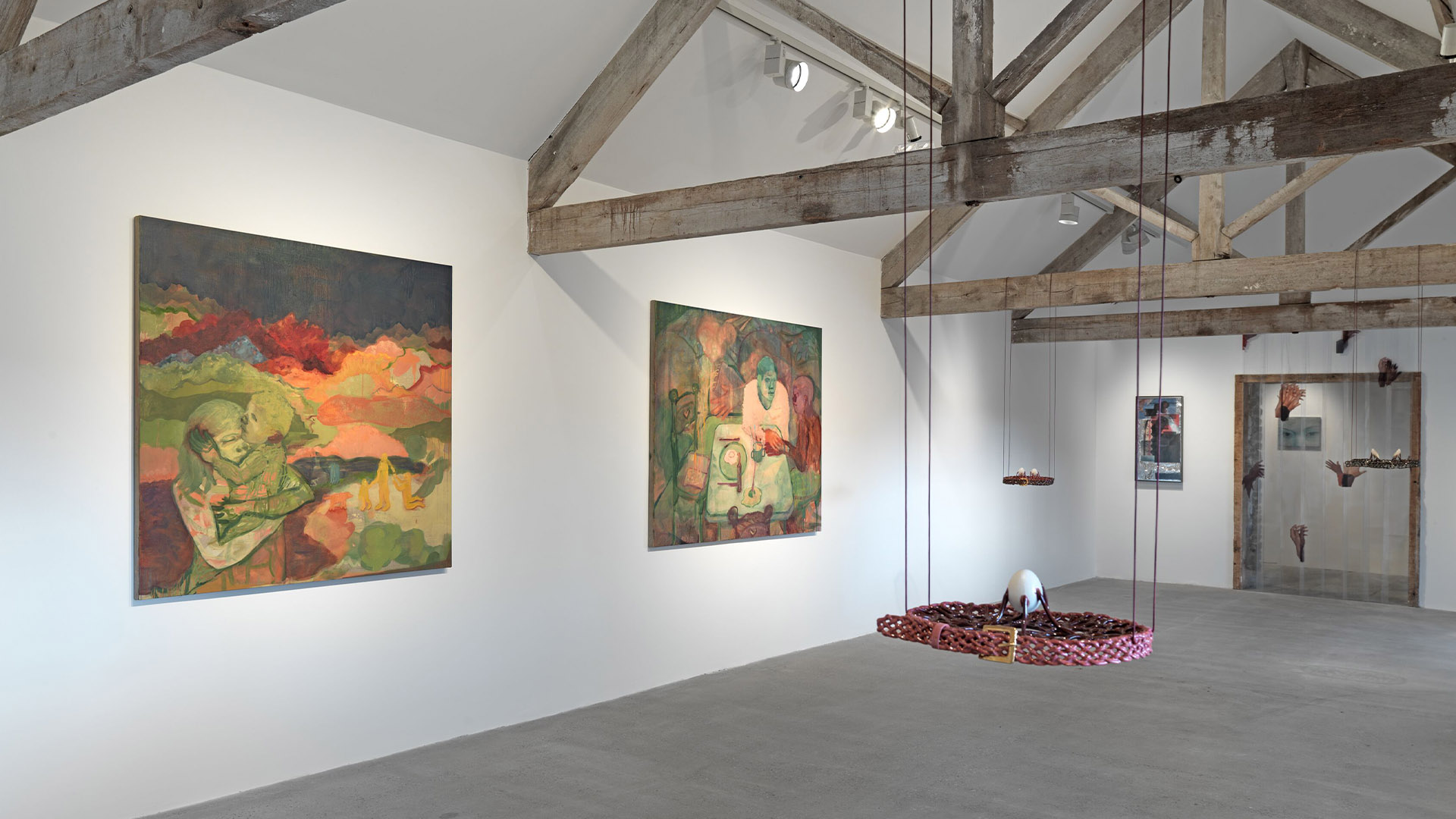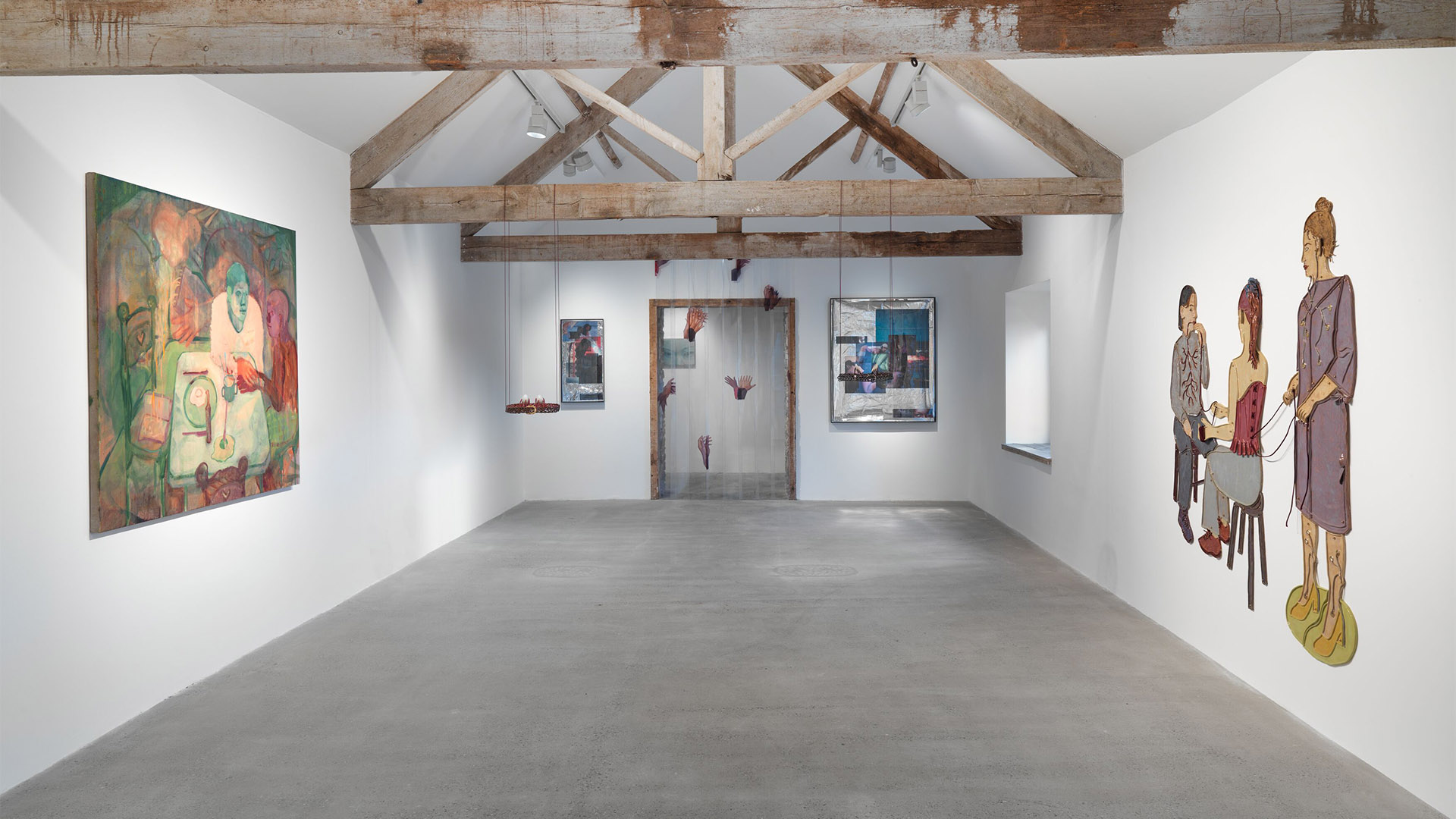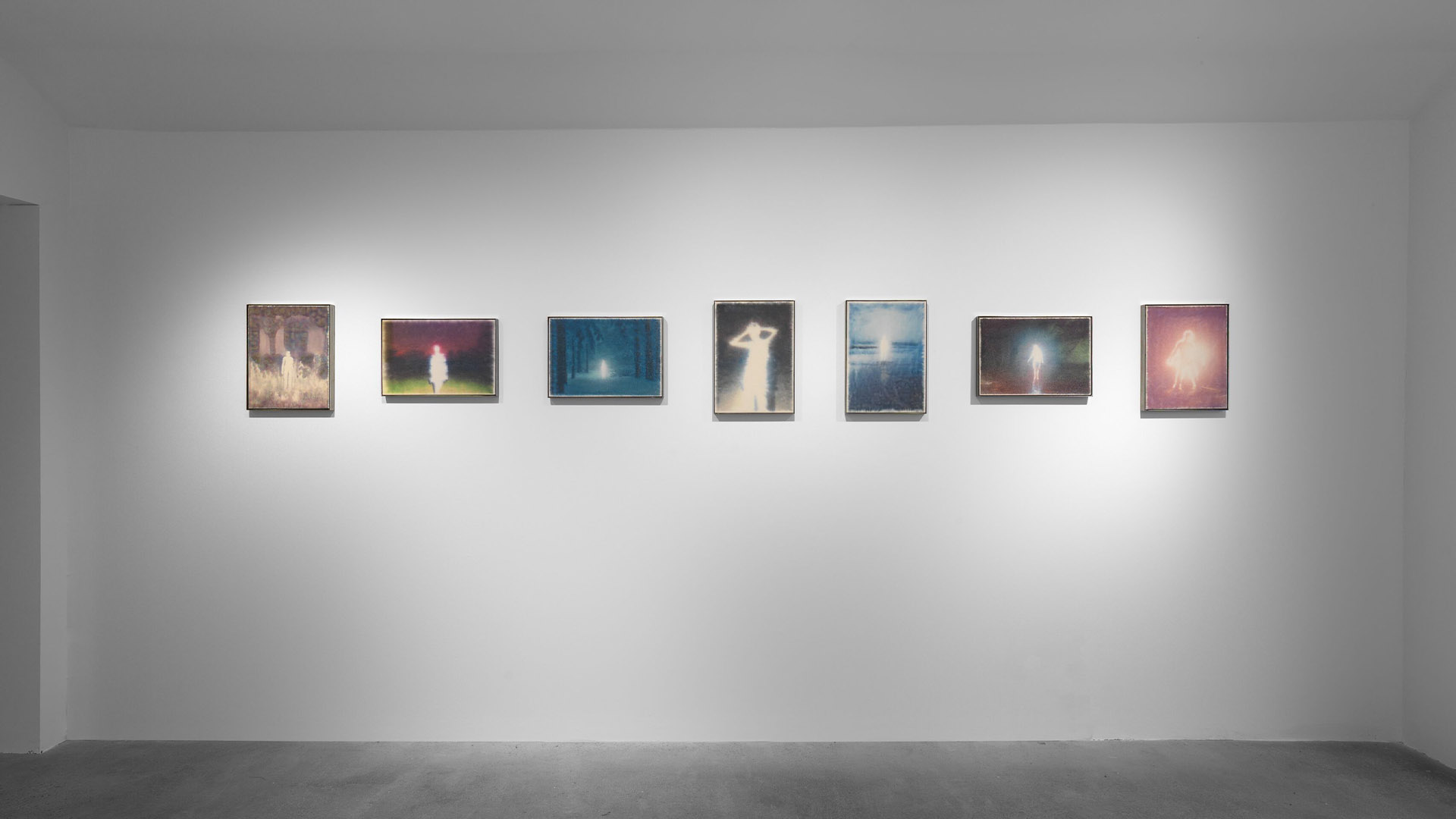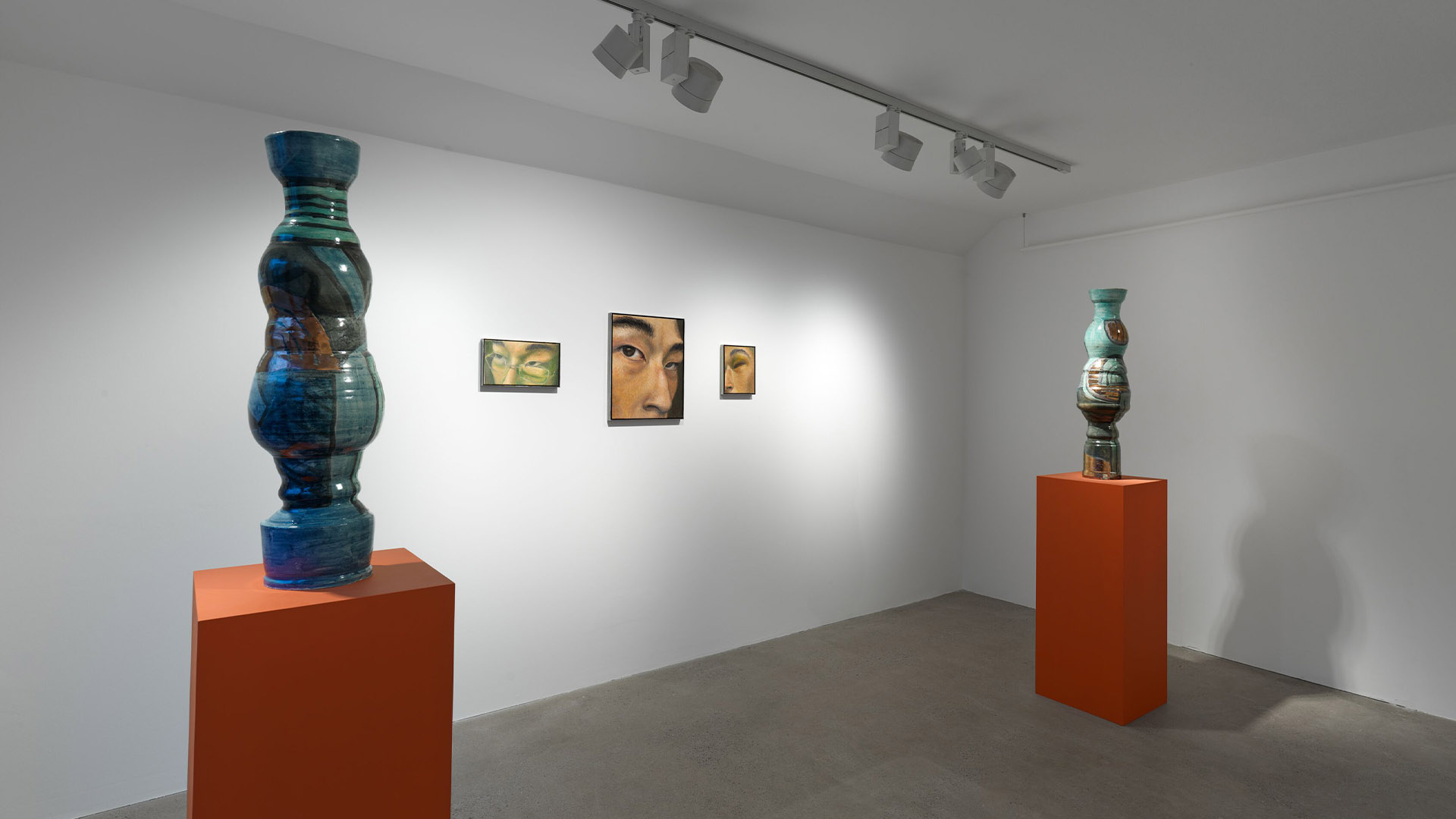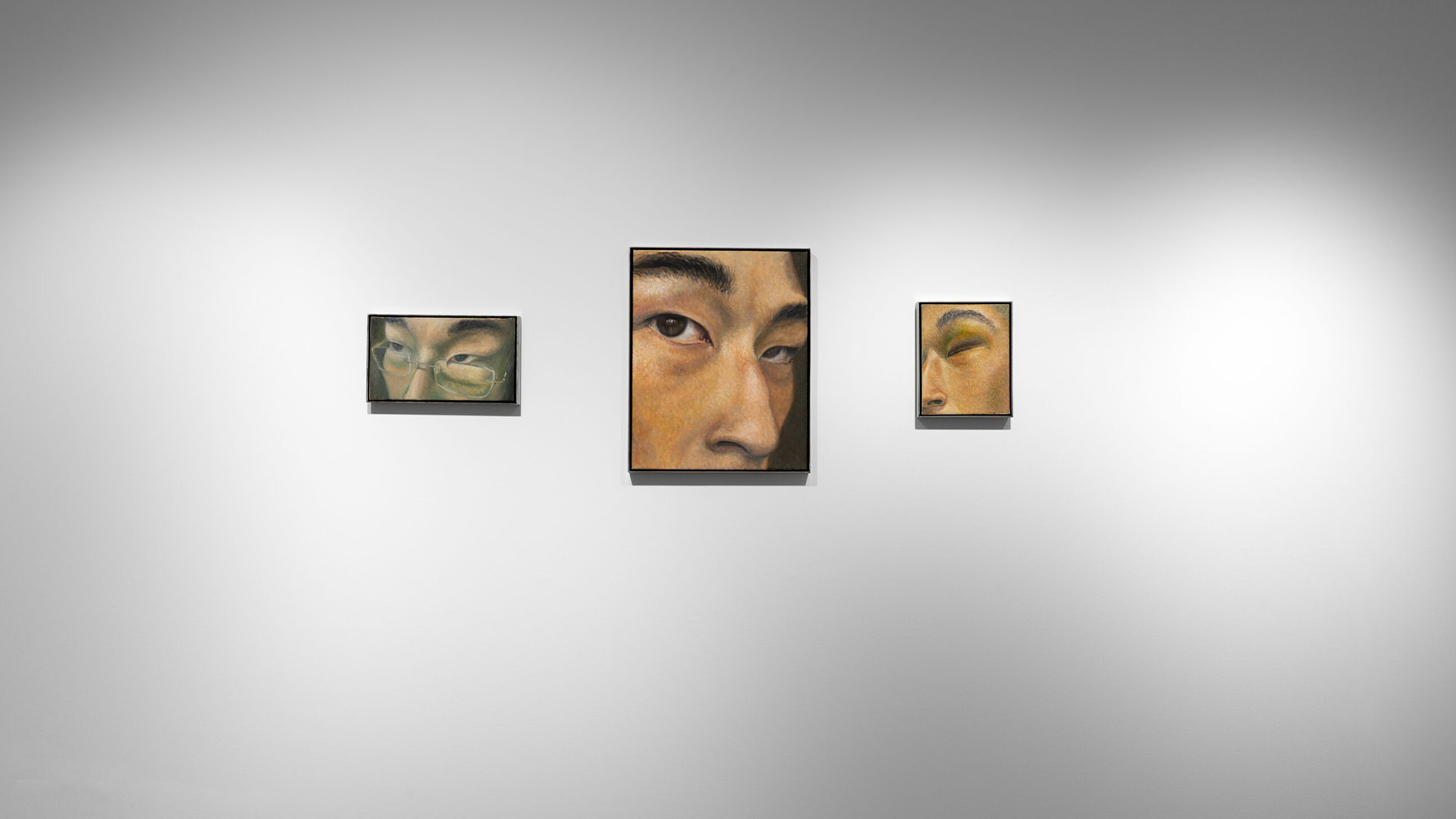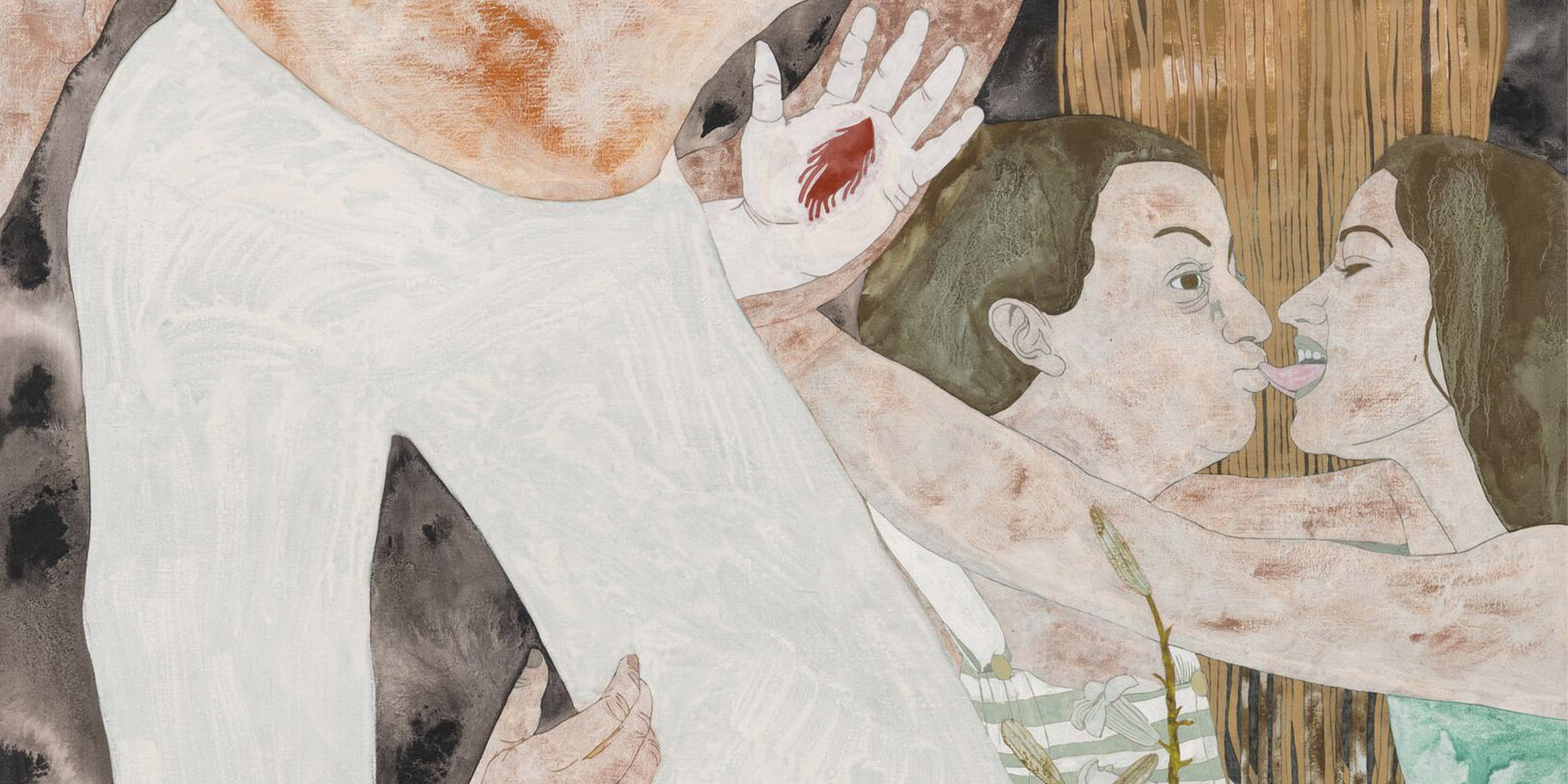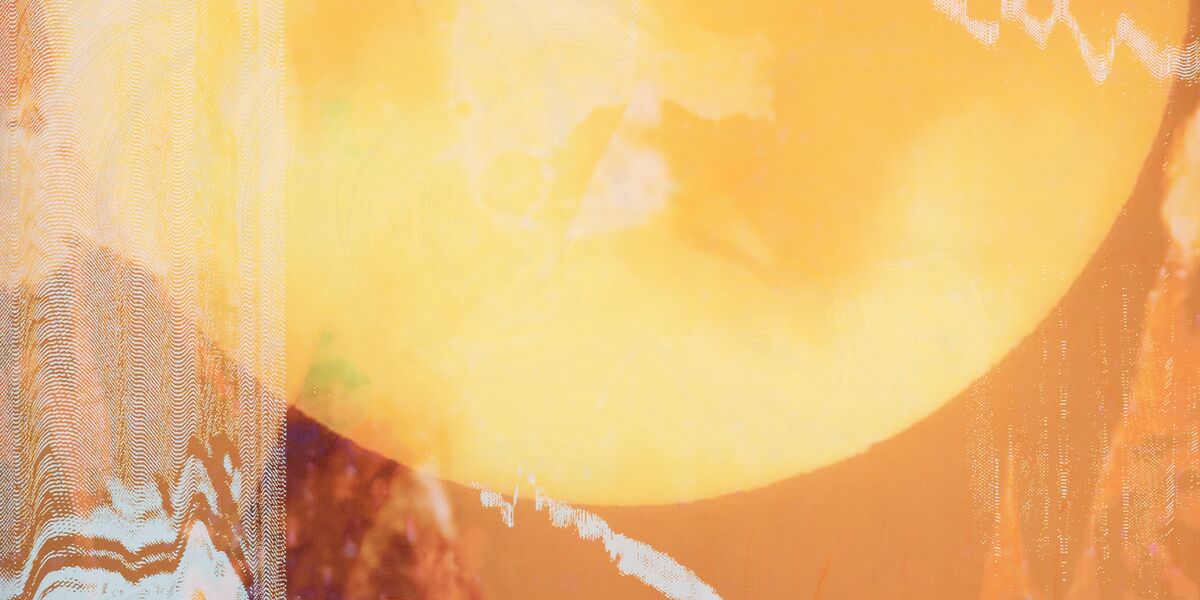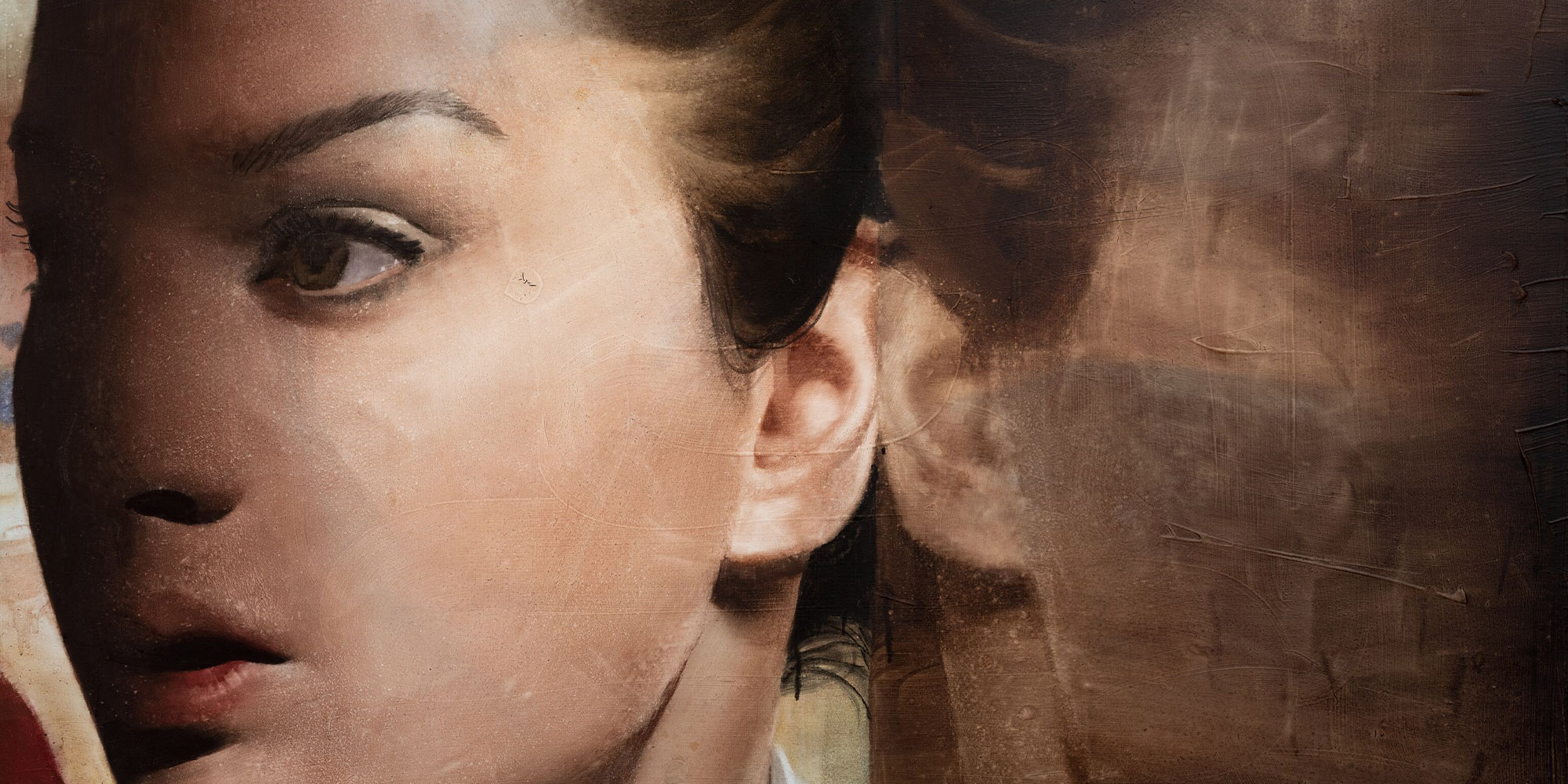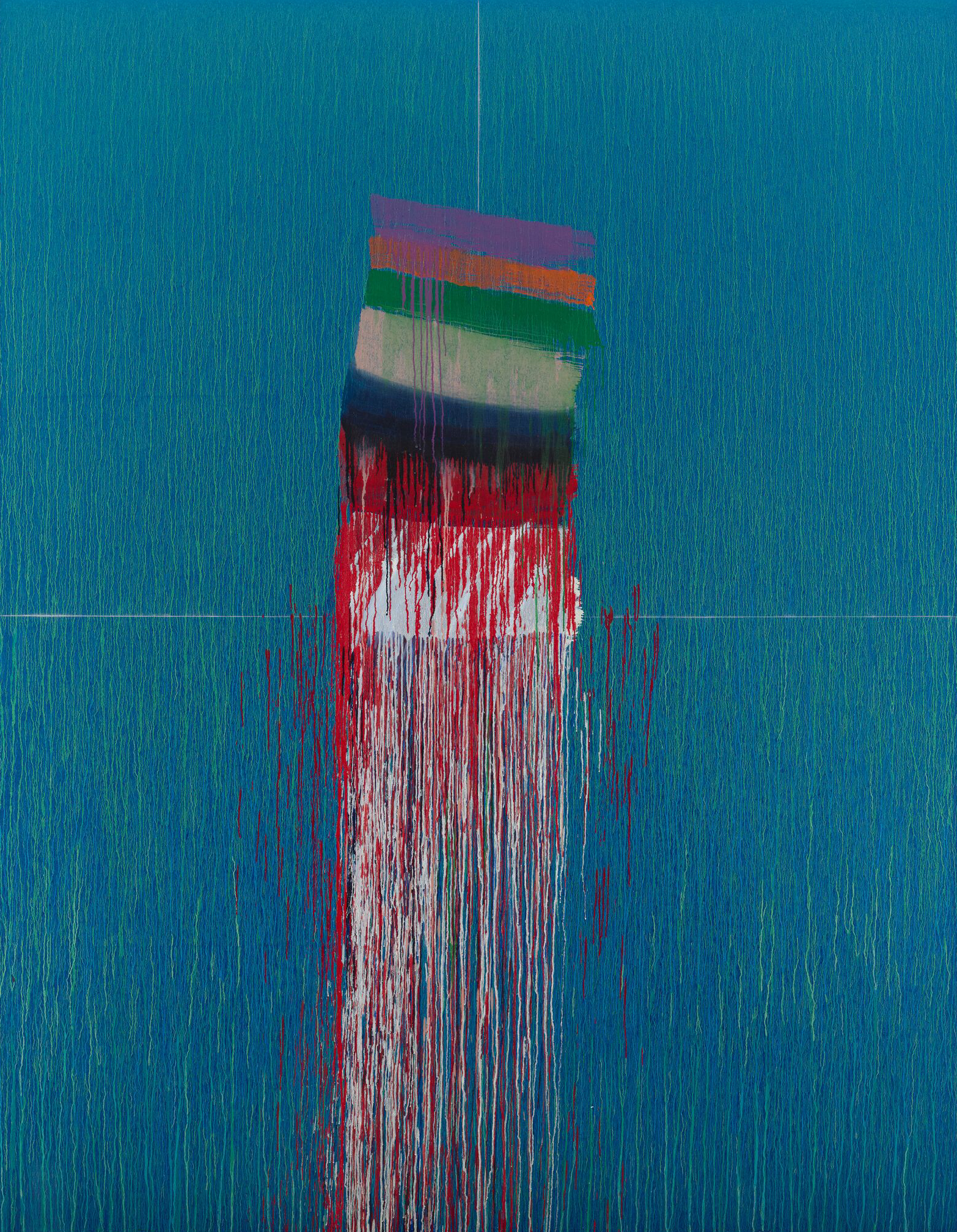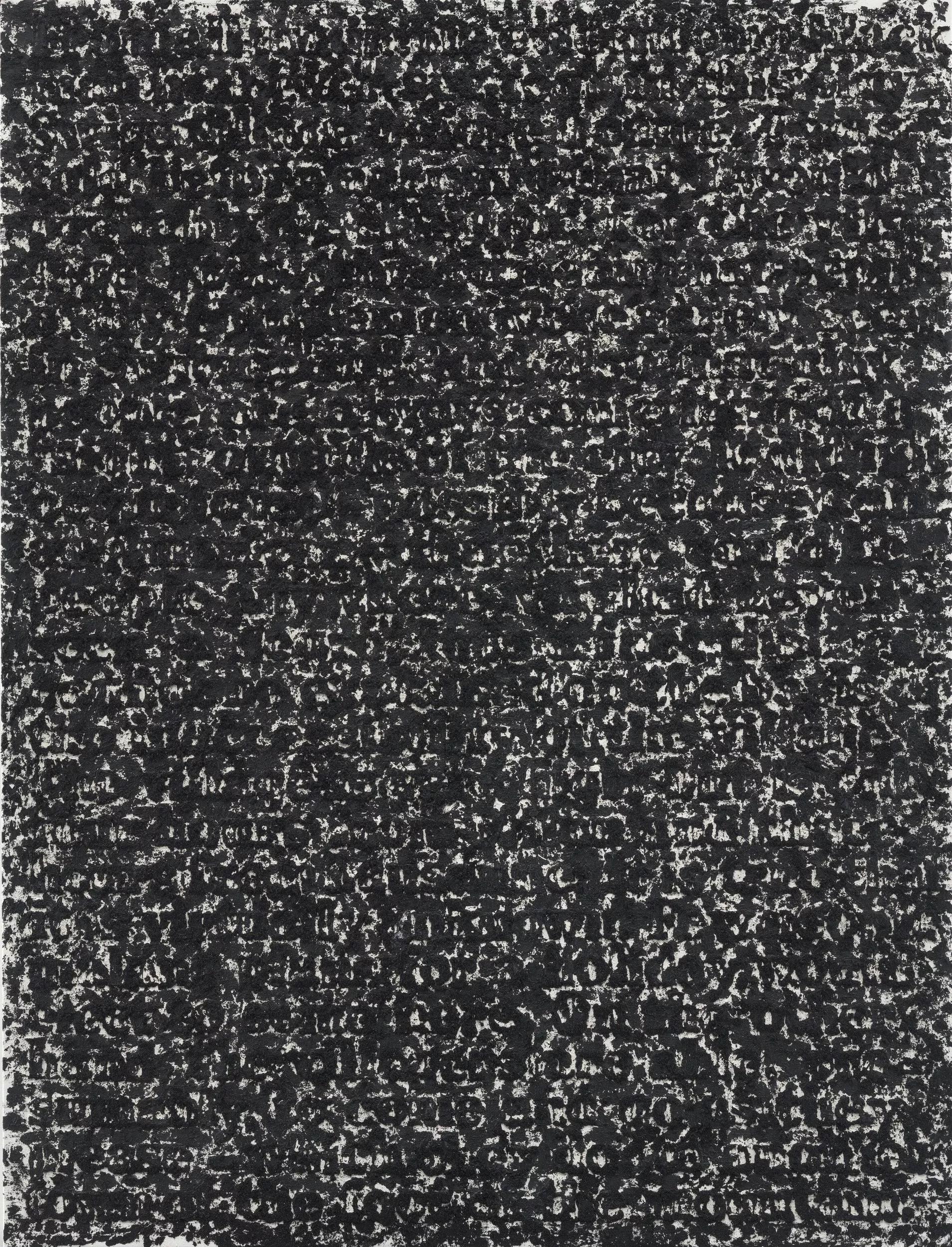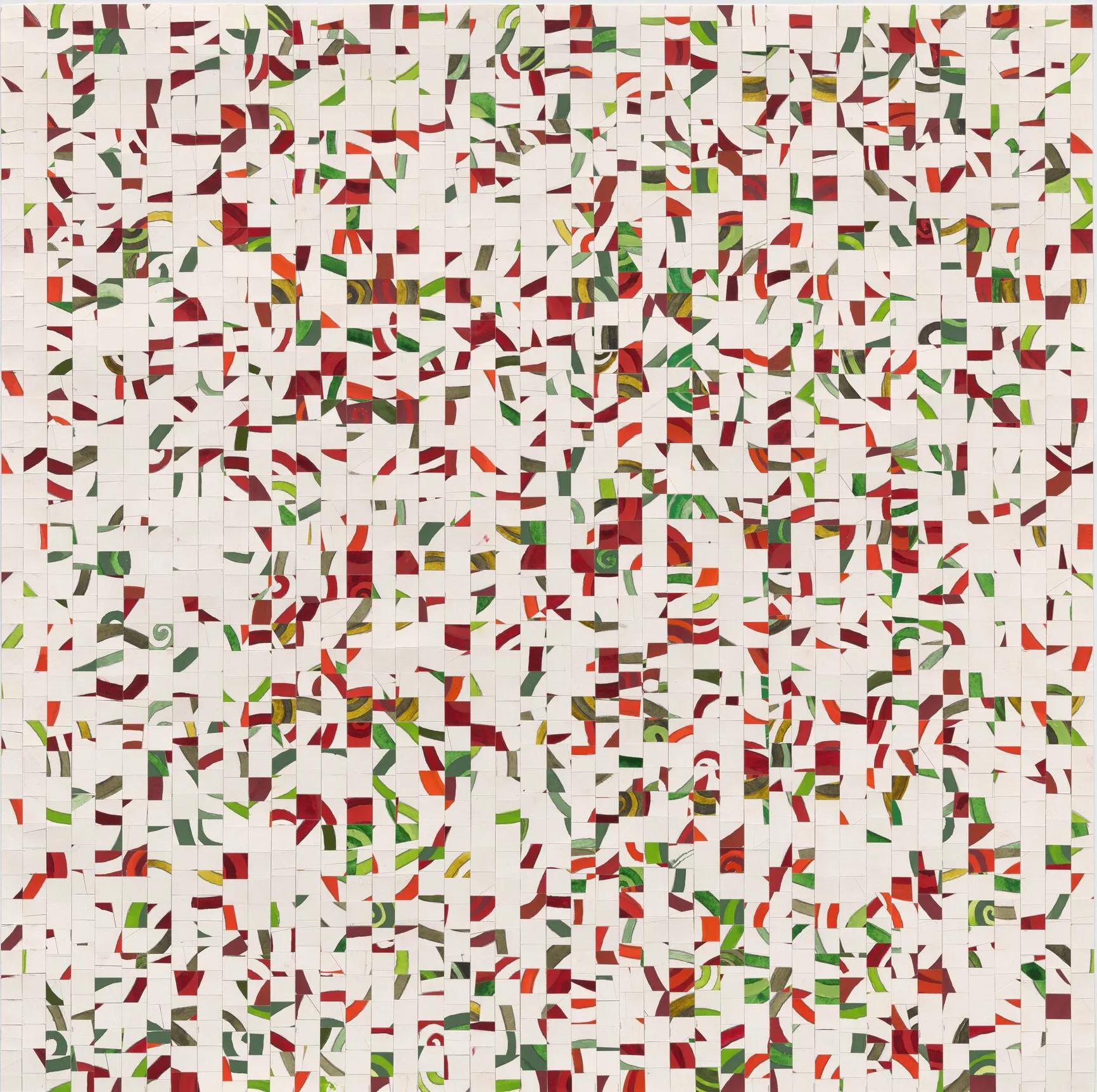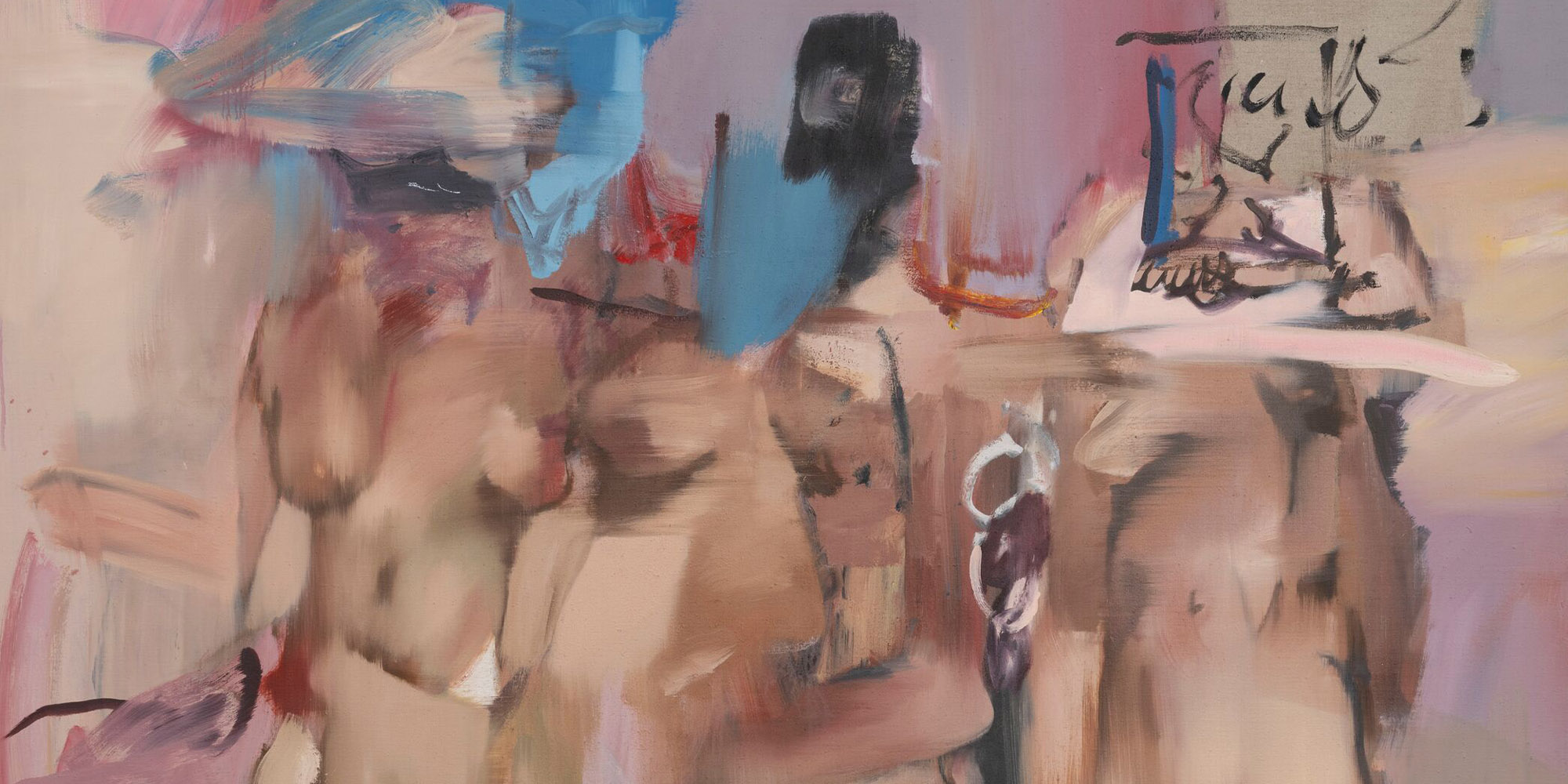
PRESENT TENSE
27 January – 28 April 2024
Somerset
‘Present Tense’ spotlights the next generation of artists living and working in the UK, from emerging to mid-career, celebrating a breadth of creative talent and socially engaged practices. The multifaceted group presentation consists of 23 contemporary artists outside of the Hauser & Wirth roster, testing the boundaries of their mediums to address and confront notions of identity, consciousness, humanity and representation. Through their individual lens, each artist is responding to the cultural climate of the UK right now, depicting a range of lived experiences that coexist and connect within the rich fabric of the same location. An extended events and learning program will run alongside the exhibition, engaging with key themes addressed within the galleries and facilitating further dialogue around points of intersection between the artists’ practices.
Explore the Exhibition
‘Present Tense’ features Lydia Blakeley, Sholto Blissett, Victoria Cantons, Emanuel de Carvalho, Shawanda Corbett, Vanessa Garwood, Ania Hobson, Clementine Keith-Roach, Sang Woo Kim, Christina Kimeze, Francesca Mollett, Christopher Page, Daisy Parris, Paloma Proudfoot, Hannah Quinlan and Rosie Hastings, George Rouy, Antonia Showering, Ebun Sodipo, Ella Walker, Shaqúelle Whyte, Gray Wielebinski and Joseph Yaeger.
The exhibition is in collaboration with Arcadia Missa, Ben Hunter, Casey Kaplan, Corvi-Mora, Gathering, GRIMM Gallery, Hannah Barry Gallery, Niru Ratnam, Pippy Houldsworth Gallery, Project Native Informant, Sim Smith and Timothy Taylor.
Beginning in the Bourgeois Gallery, the exhibition opens with a collection of work that addresses shifting realms of contemporary experience. Spotlighting artists Lydia Blakeley, Sholto Blissett, Hannah Quinlan and Rosie Hastings, Shaqúelle Whyte and Gray Wielebinski, who each adopt and extend beyond traditional mediums and modes of display.
Sholto Blissett conjures uninhabited vistas to investigate how societies conceive and mythicize their place in the natural world. His landscape paintings are comprised of mountain ranges, vast bodies of water and neoclassical architecture assembled into dreamlike combinations reminiscent of Renaissance capriccios. Inspired by the view that humans cannot escape nature and that we never exist beyond its bounds, Blissett paints uncanny worlds where humans are neither free in a state of Arcadian bliss nor exist in opposition to nature, but are simply and undeniably connected to it.
Hannah Quinlan and Rosie Hastings use the medium of fresco painting to portray complex power dynamics that span class, social relations and positions of authority. Their collaborative work is linked to ongoing research into the relationship between public space, architecture, state infrastructure, gender, sexual identity and its impact on the LGBTQIA+ community, asking viewers to question what public space looks like and who is free to occupy it.
Gray Wielebinski’s sculptures are modeled on shooting targets, drawn from a fascination in the unintentional beauty of such aggressive objects, viewing them as a processing of terminal capitalism and the omnipresence of collective low-grade anxiety. Wielebinski reveals how predetermined narratives reflect and shape our conditioned identities, engaging directly with the contexts in which we live to open up the possibilities for more inclusive storytelling.
Leading into the next gallery, Victoria Cantons’ practice is shaped by her multinational, cultural and religious background, addressing issues of freedom, how beliefs are shaped and the notion of who the individual can be. Cantons incorporates ideas of femininity and gender in her work, drawing on her own autobiographical experiences as a gay and transgender woman.
The Rhoades Gallery is dedicated to large-scale painting, including Emanuel de Carvalho, Vanessa Garwood, Ania Hobson, Christina Kimeze, Daisy Parris, George Rouy, Ella Walker and Joseph Yaeger, celebrating the breadth of the medium, its place within the history of art and its enduring ability to evolve and transport the viewer.
An ode to human existence in its most raw state, Daisy Parris’ deeply saturated works steer the viewer through unflinching moments of reflection and tenderness, exuding energy and a visceral response to everyday life.
George Rouy’s artistic pursuit delves into the physicality and movement of the body, skillfully navigating contradictions, harmonies, and perpetual transformations. Figures in Rouy’s compositions are partially bounded, with borders often exploded, entities entangled and features abstracted, interrogating the contemporary crucibles of gender, fiction and technology.
Joseph Yaeger’s painting, ‘Once, always’ (2023), captures an isolated moment intended to trigger the subconscious, harnessing visual techniques such as doubling, reflections and close-up fragments of time. Painted with layers of watercolor on gessoed canvas that add to their hazy sense of impermanence, Yaeger’s paintings transform images sourced from film, his own photography, stock images and news media to evoke fleeting moments of recollection and thought.
The Pigsty Gallery features a collaborative presentation of work by Christopher Page and Clementine Keith-Roach. Page combines hard-edged geometric compositions with illusionistic painting techniques to highlight contemporary theories of vision, balancing the interplay between our imagination and symbolic registers. His motifs confuse the boundaries between real and virtual space: shadows cast across the surface of the paintings call into question where the work begins and ends; blank mirrors confront us with our own absence; glowing skies distort architectural space. Whilst drawing from Baroque illusion, the works hover on the edge of abstraction, making reference to the flattened world of digital screens.
Reminiscent of archaeological artefacts, Keith-Roach creates casts, often taken from her body, and melds them with antique terracotta vessels painted to create a continuous surface that blurs the boundary between body and object, skin and clay. Her work is inspired by clay’s inherent tactility and sensuality, as well as the immediate physical affinity one feels with antique ceramic containers and their readiness to be anthropomorphized. The resulting works simultaneously celebrate the female form and breathe life into the storied histories of domestic objects.
The Workshop Gallery presents intricate sculptural works by Paloma Proudfoot, wall-mounted and suspended, alongside paintings by Francesca Mollett, Antonia Showering and multimedia works by Ebun Sodipo. Proudfoot investigates how anatomical representations of the body are able to merge with a more emotionally driven sculptural language. In her Ambrosia series, the web-like delineation of each organ is constructed within intimate ceramics, building her own metaphorical language to describe how the stomach reacts to emotional turmoil—a constriction, tightening, often expressed as ‘my stomach is in knots.’ Meanwhile, ‘Laced’ (2023) features anatomically restructured characters connected by a thread, embodying notions of collective memory, healing and protection.
Similarly, Francesca Mollett’s expansive abstract paintings are concerned with grasping the intangible, subverting conventional classification and providing an impression of an otherwise elusive moment. Working from abstraction toward figuration, Antonia Showering is known for her enigmatic depictions of single or coupled subjects that slide in and out of their surroundings. Set against scenes of ambiguous domesticity and natural landscapes, these areas of abstraction nod to ever-shifting realities of subjectivity, memory, imagination and desire.
The exhibition closes with a pairing of work by Shawanda Corbett and Sang Woo Kim. Having spent their early years in Mississippi, US and Seoul, South Korea respectively, the London-based artists address themes of fractured identity and cultural duality that take on new connotations in a modern, digitalized world.
Corbett’s performative objects, part of a new ceramic series entitled ‘The Haint Blue Period,’ traverse a feeling or memory of a person. Historically, African Americans would paint the ceiling of front porches and exterior window shutters to prevent haints, malevolent spirits and a more personified energy from entering their home. The series looks at the darkest and lightest part of an individual’s humanity, as well as the gradient in-between. Sang Woo Kim was raised in London, UK by traditional Korean parents and always felt ‘other’ to the people around him. Working from painting to installation, Kim builds up and breaks down material boundaries to create a visual ‘skin’ composed of nostalgia and recollections, looking inwardly at his experience of being a first-generation immigrant. Identity takes on new associations in the social media realm, where one’s persona is a multi-layered construct and can be created out of thin air. Kim’s work questions what constitutes identity and how much of it is real.
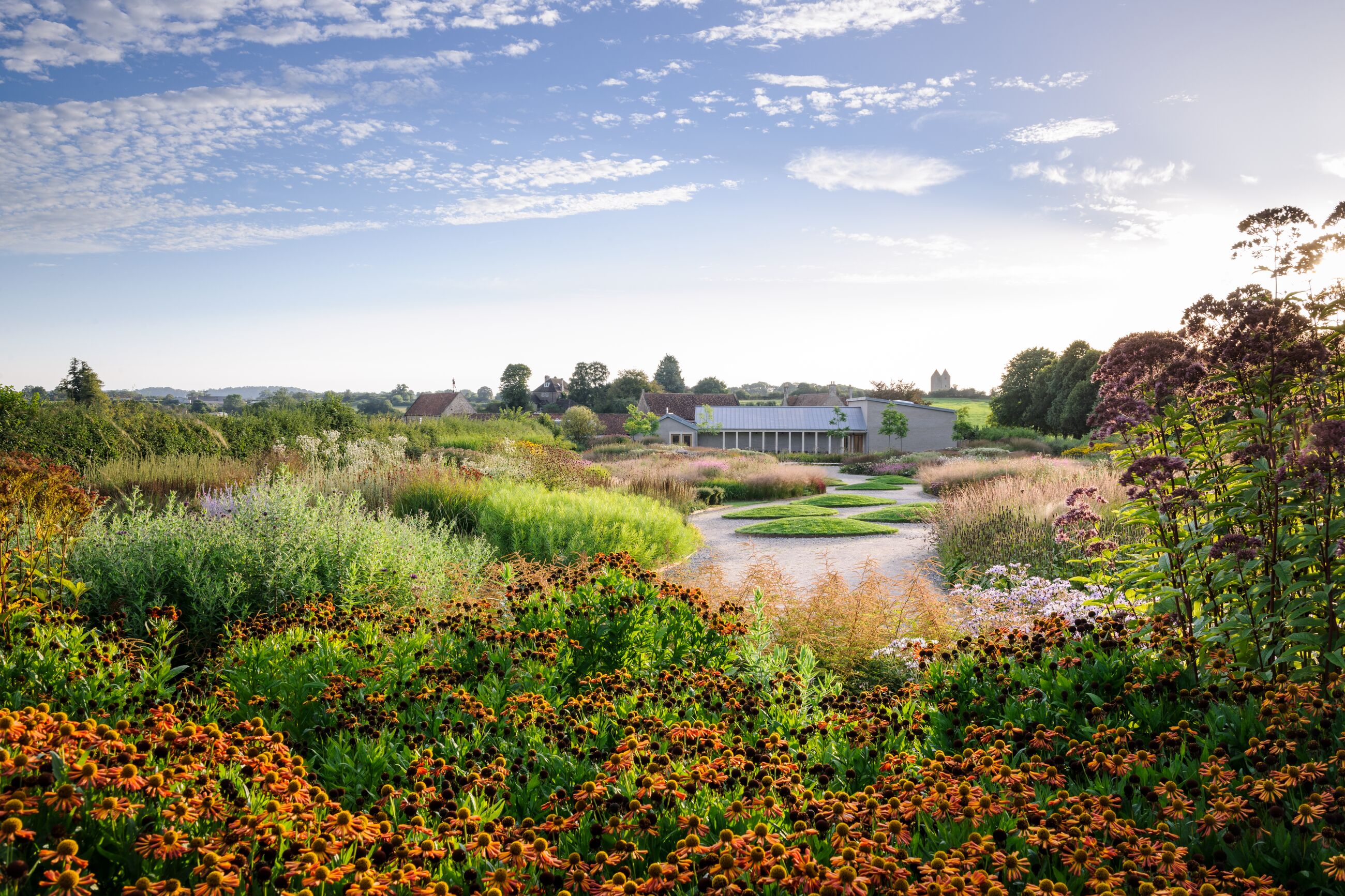
On View in Somerset
‘Present Tense’ is on view through 28 April 2024 at Hauser & Wirth Somerset. The gallery is open Tuesday – Sunday, 10 am – 5 pm.
Inquire about available works in ‘Present Tense’
Related Content
Current Exhibitions
1 / 6
